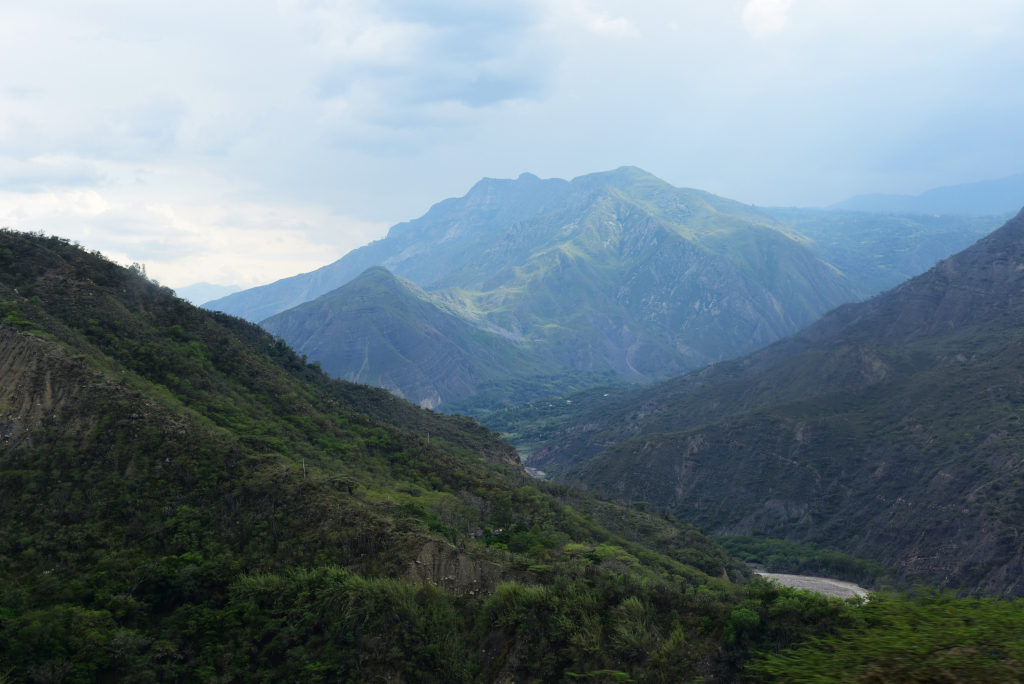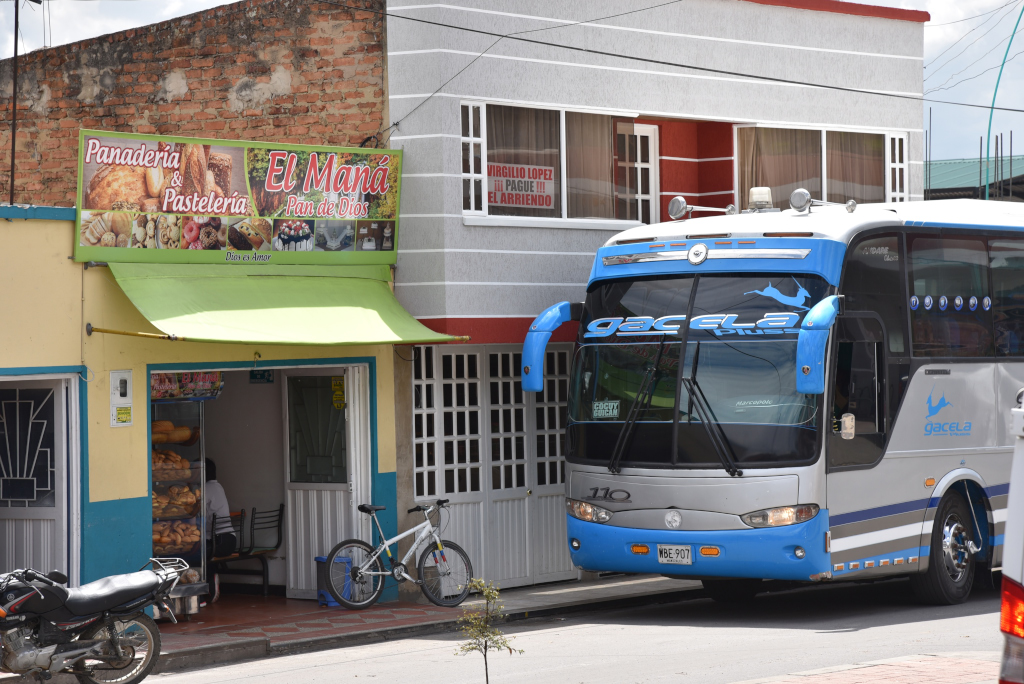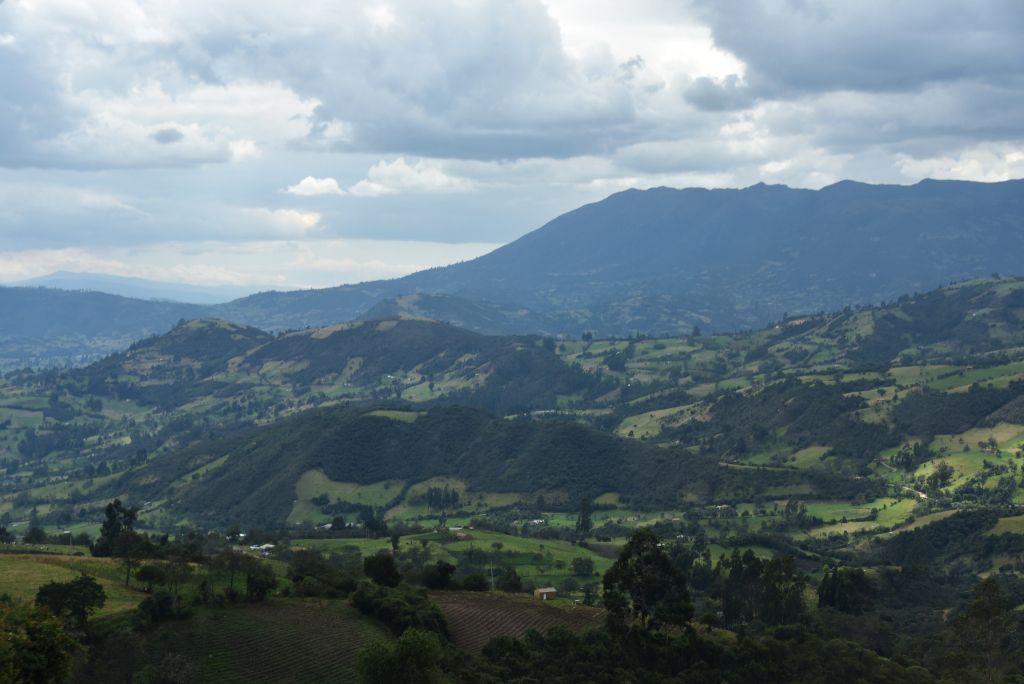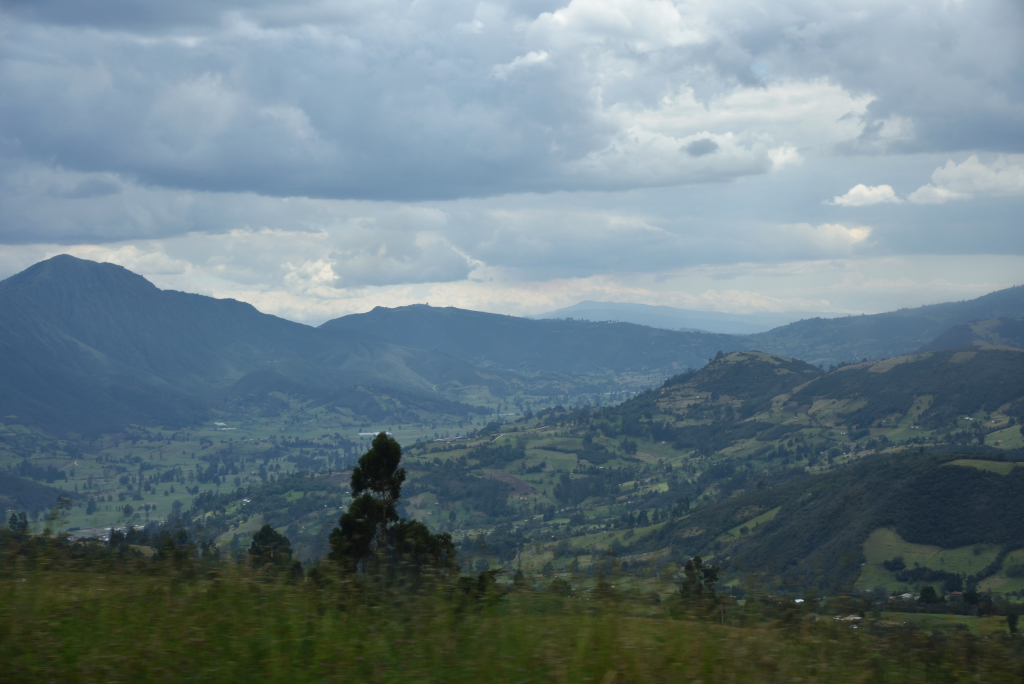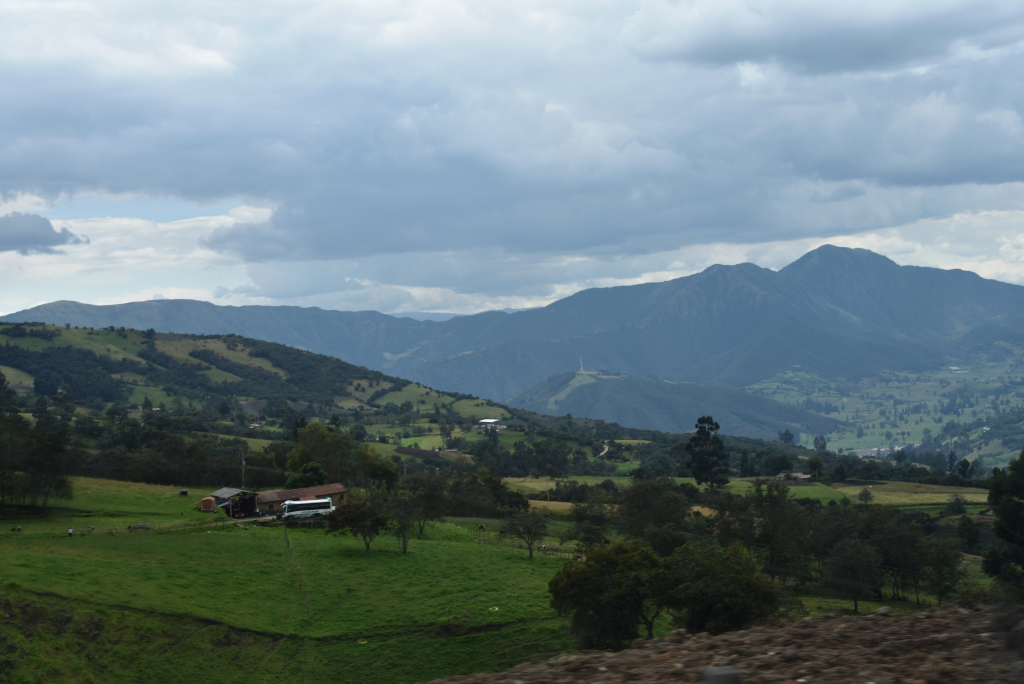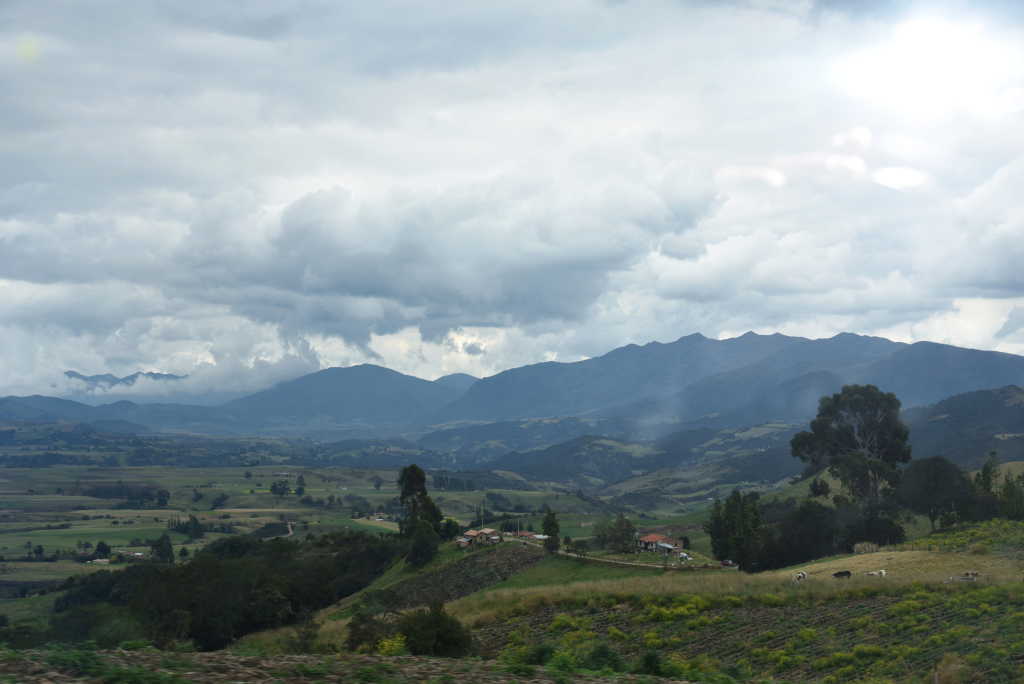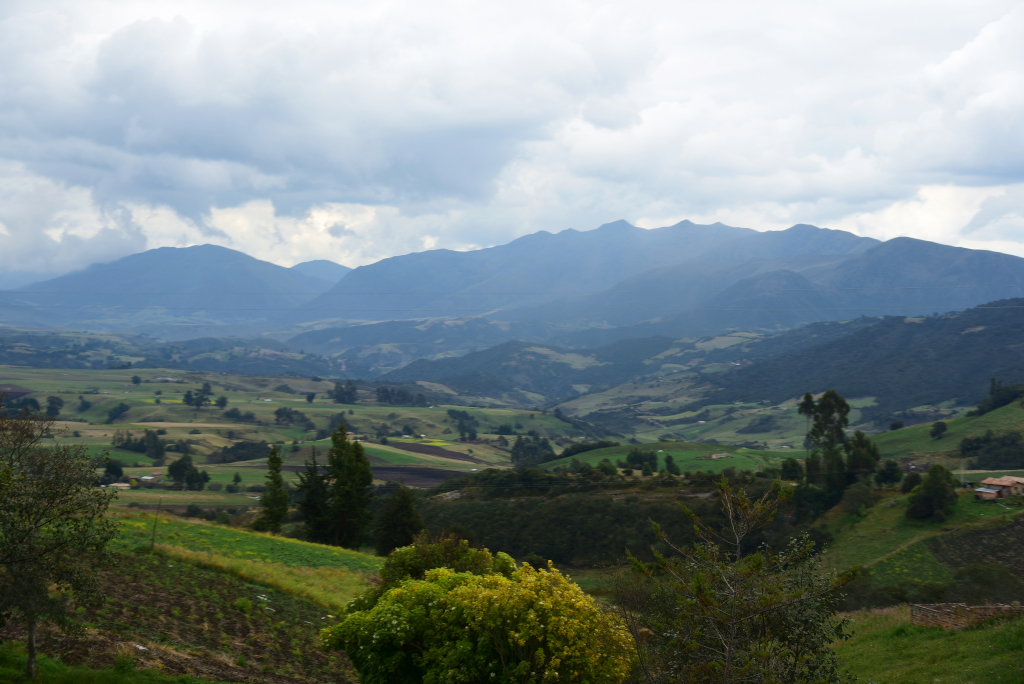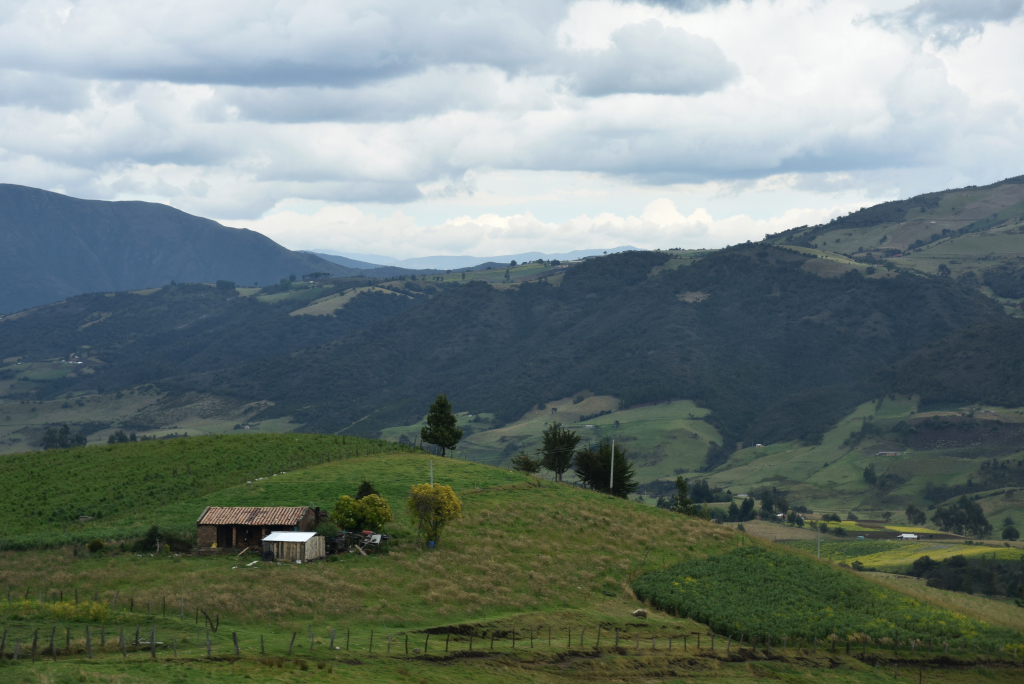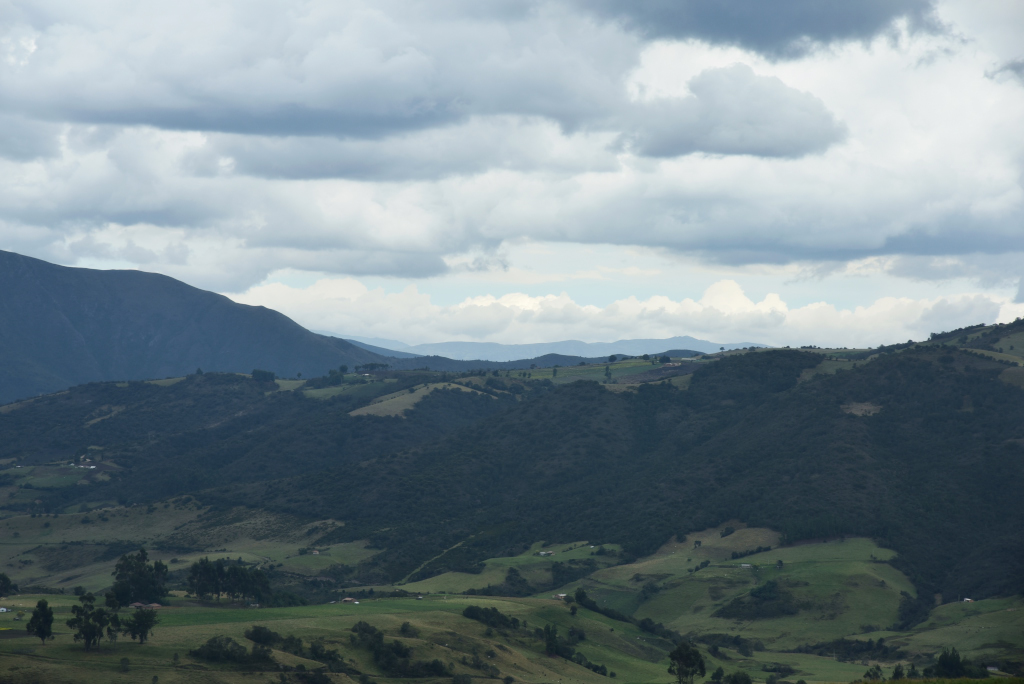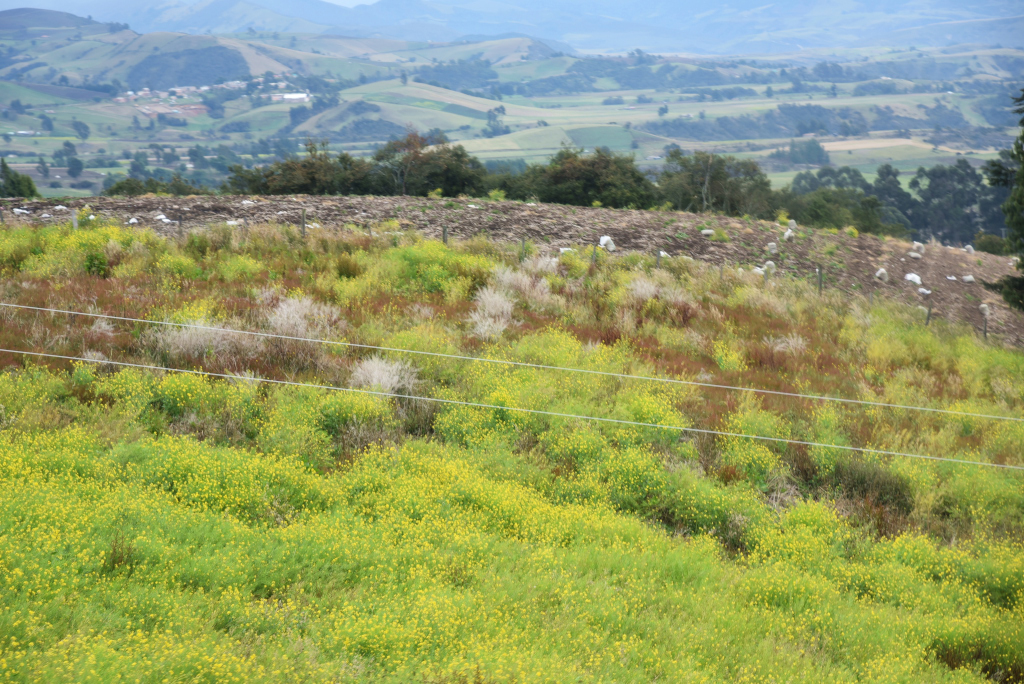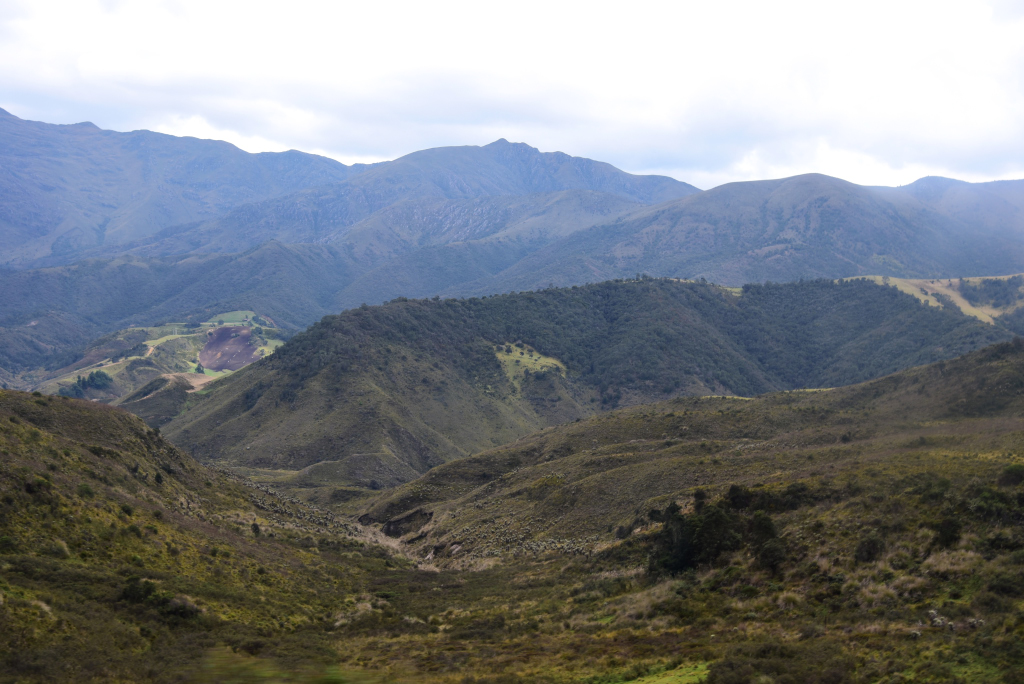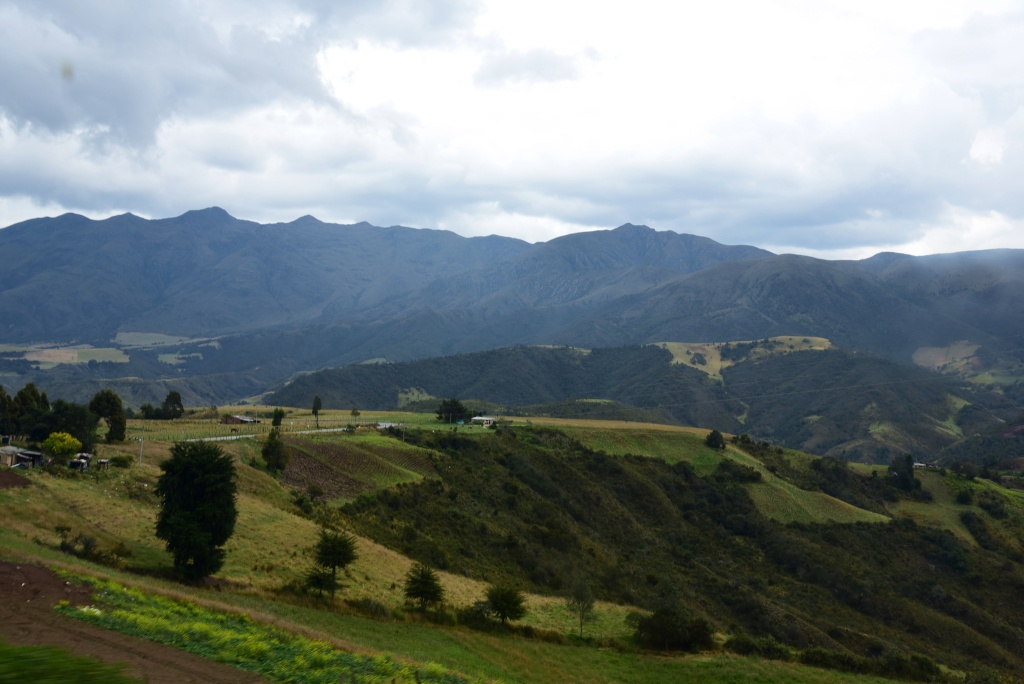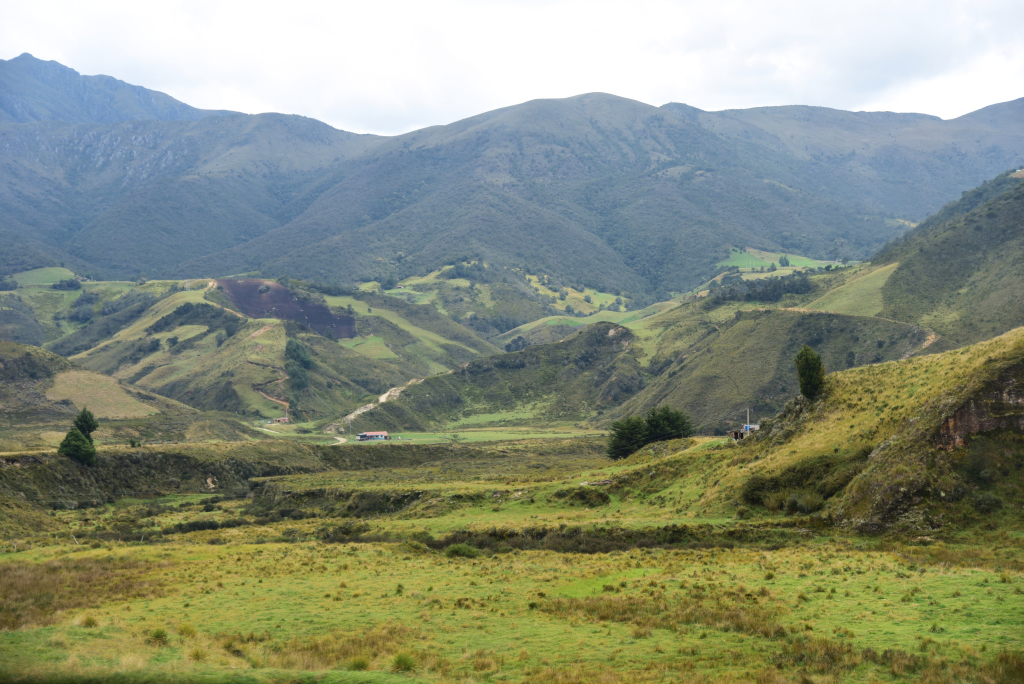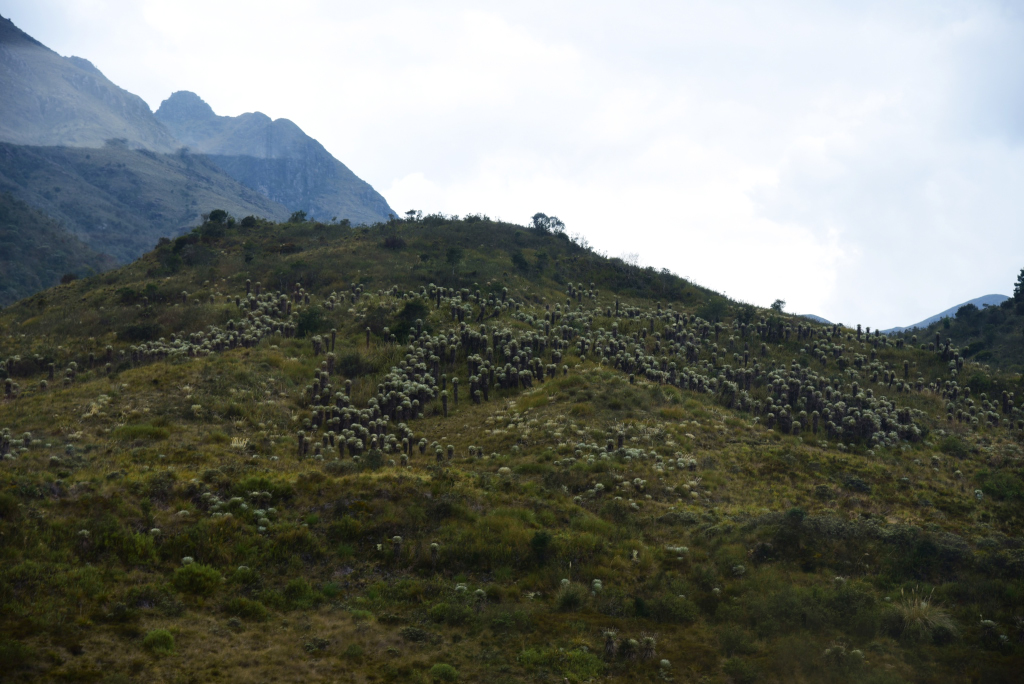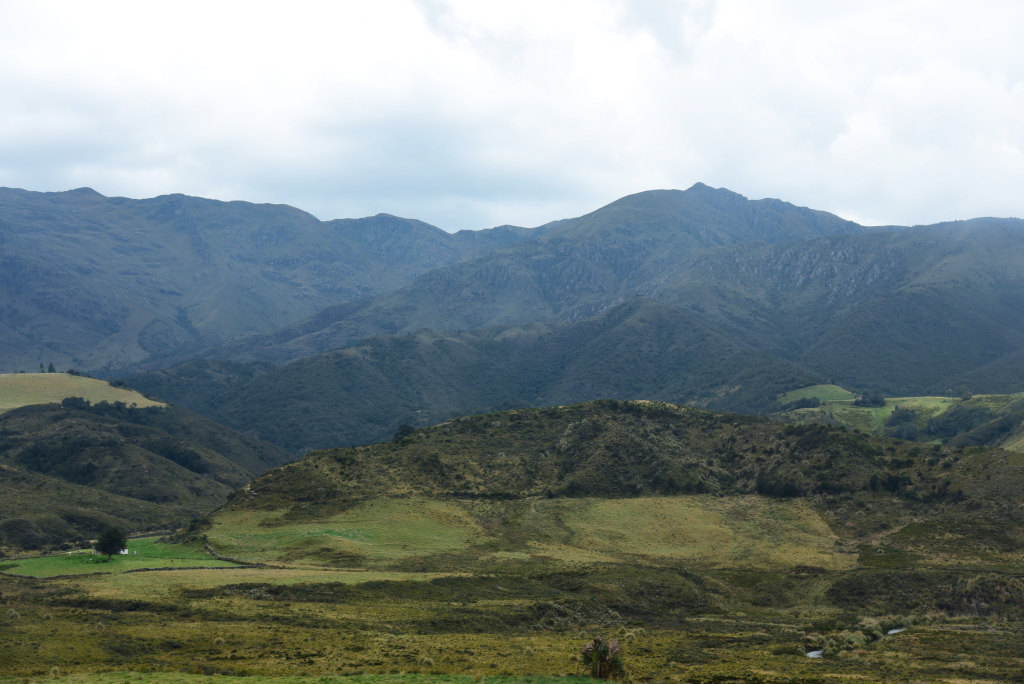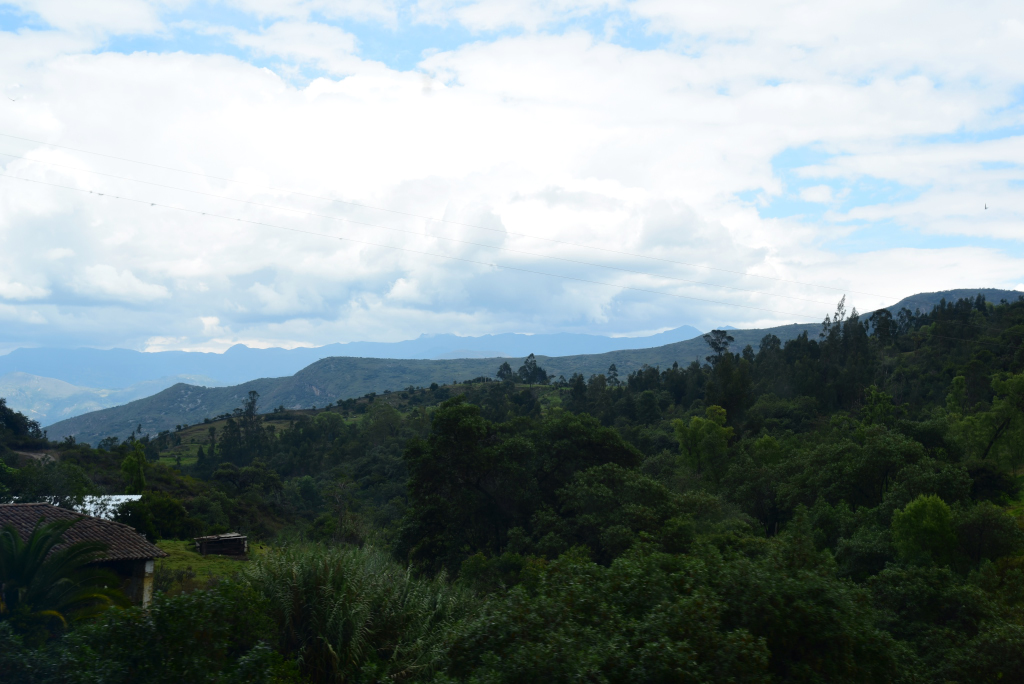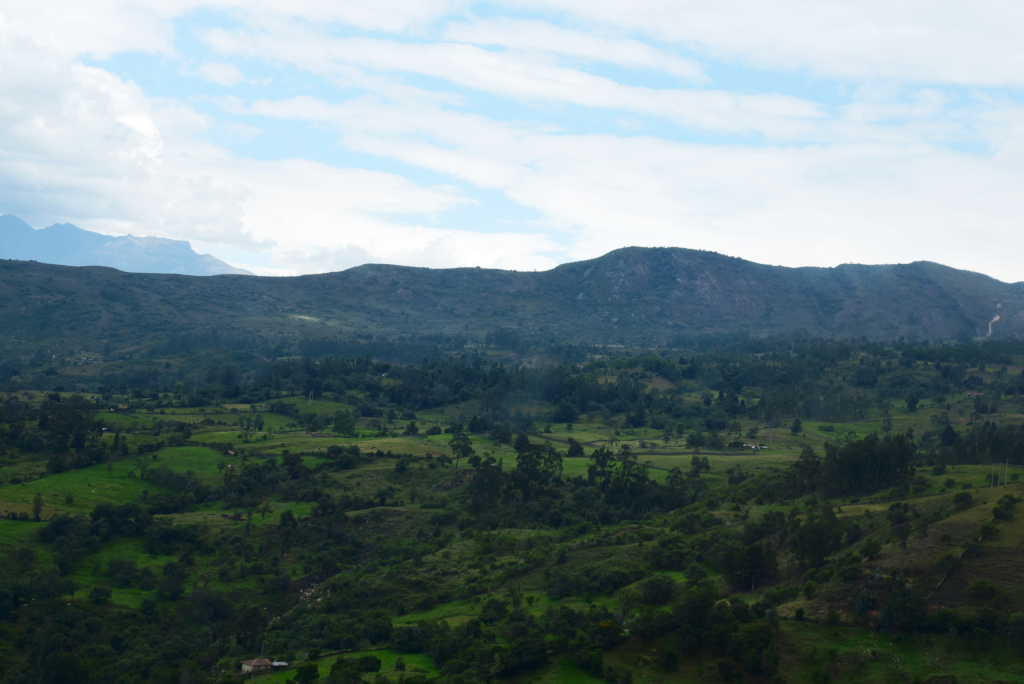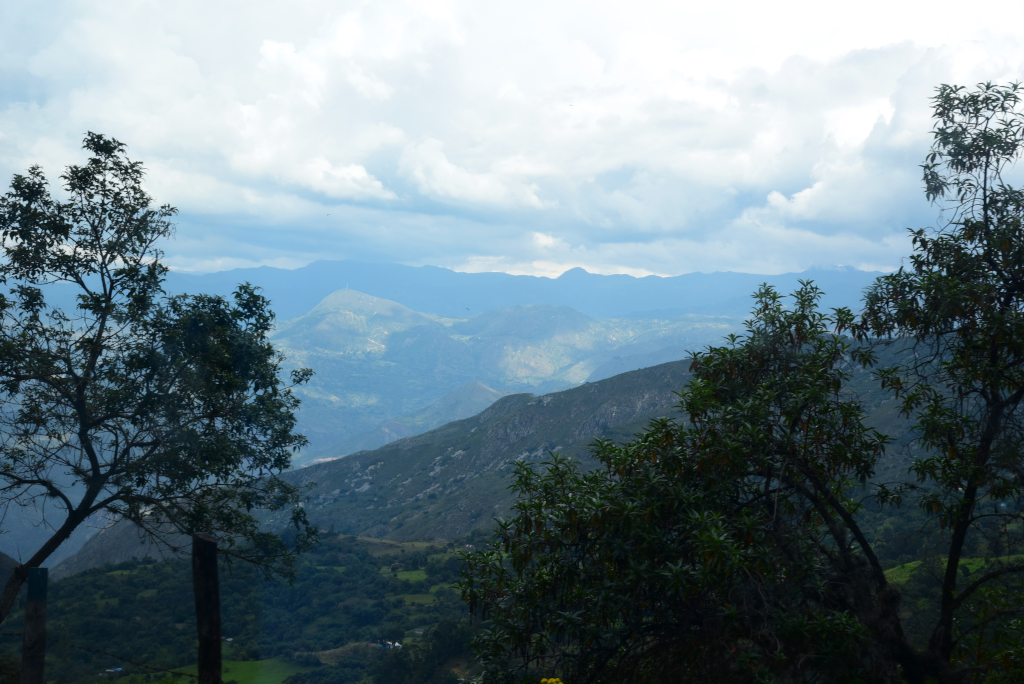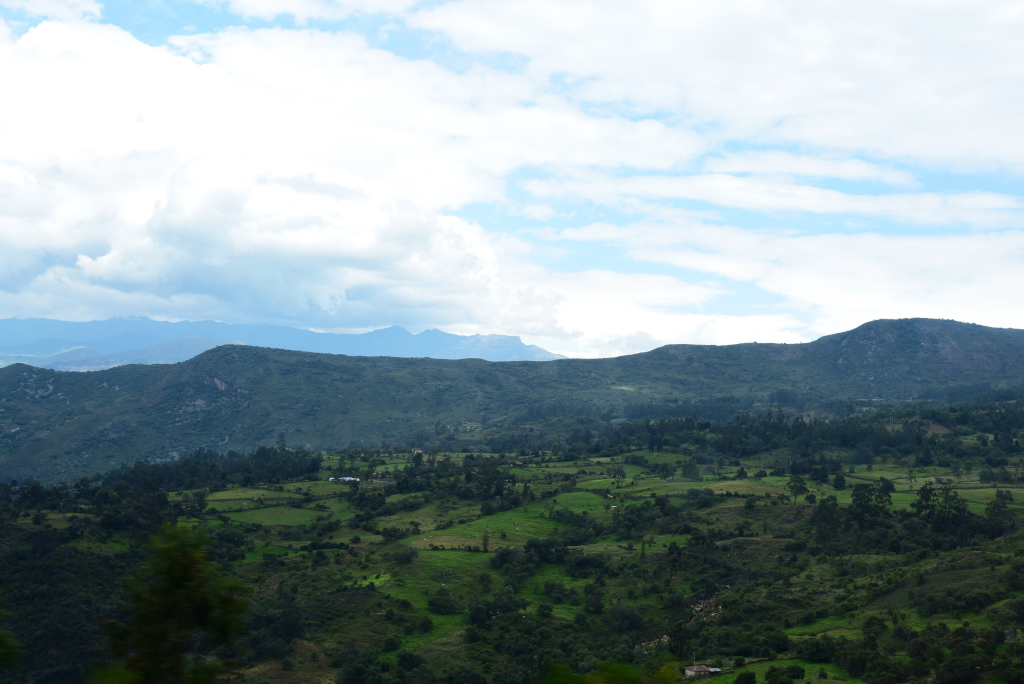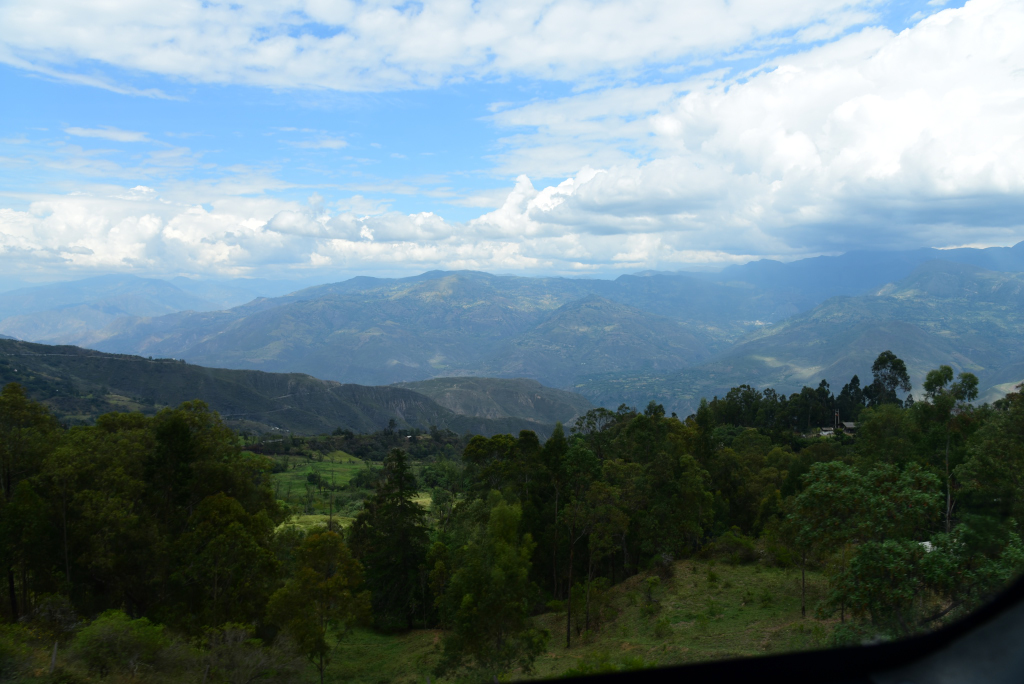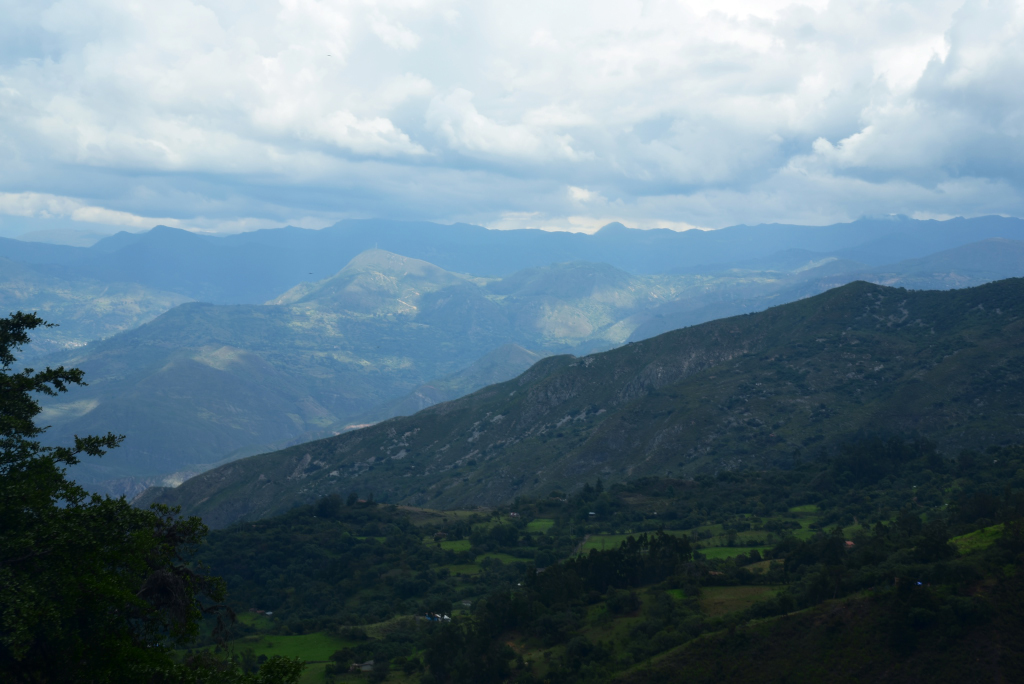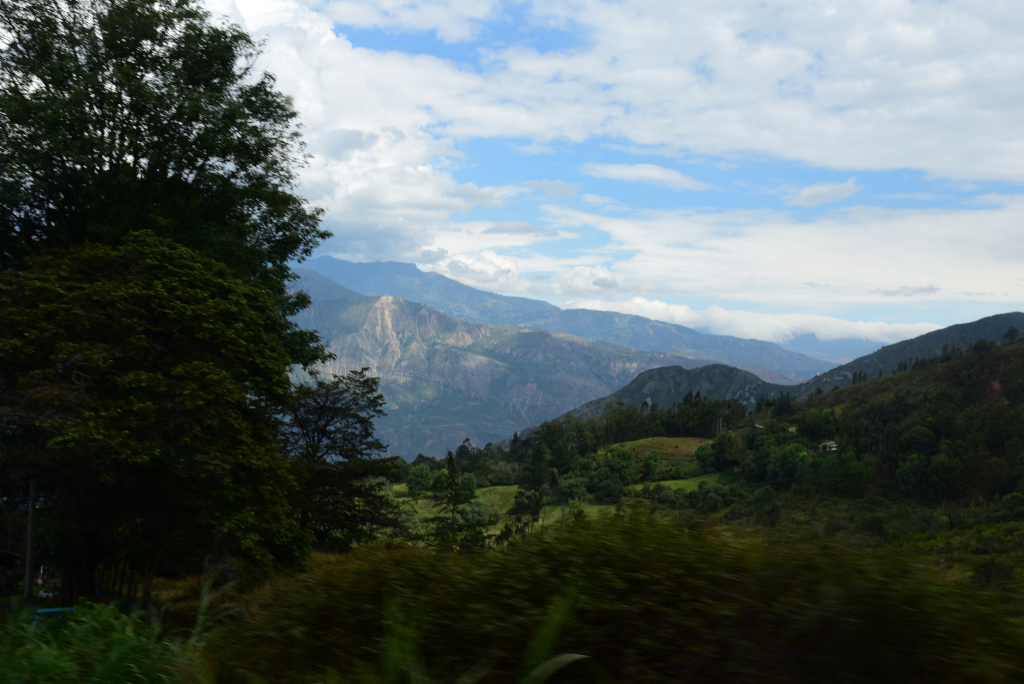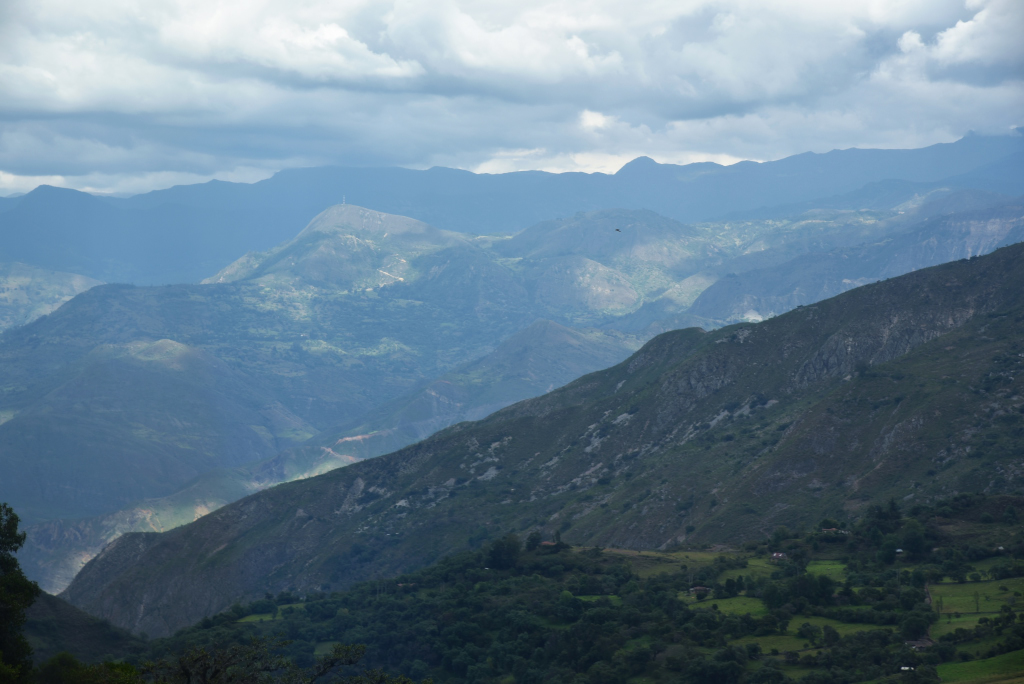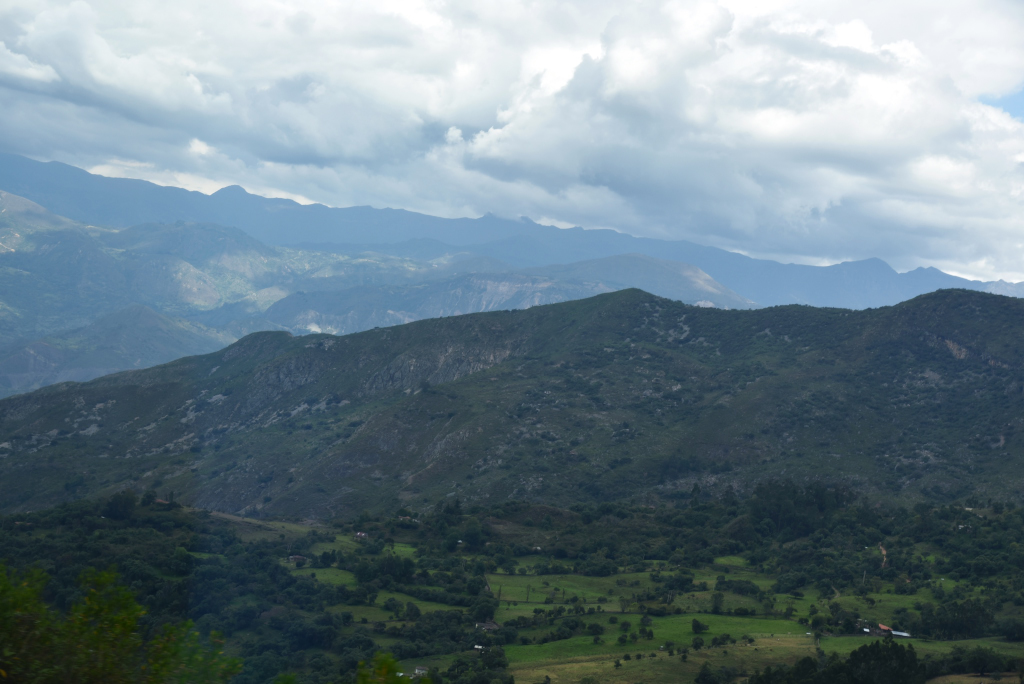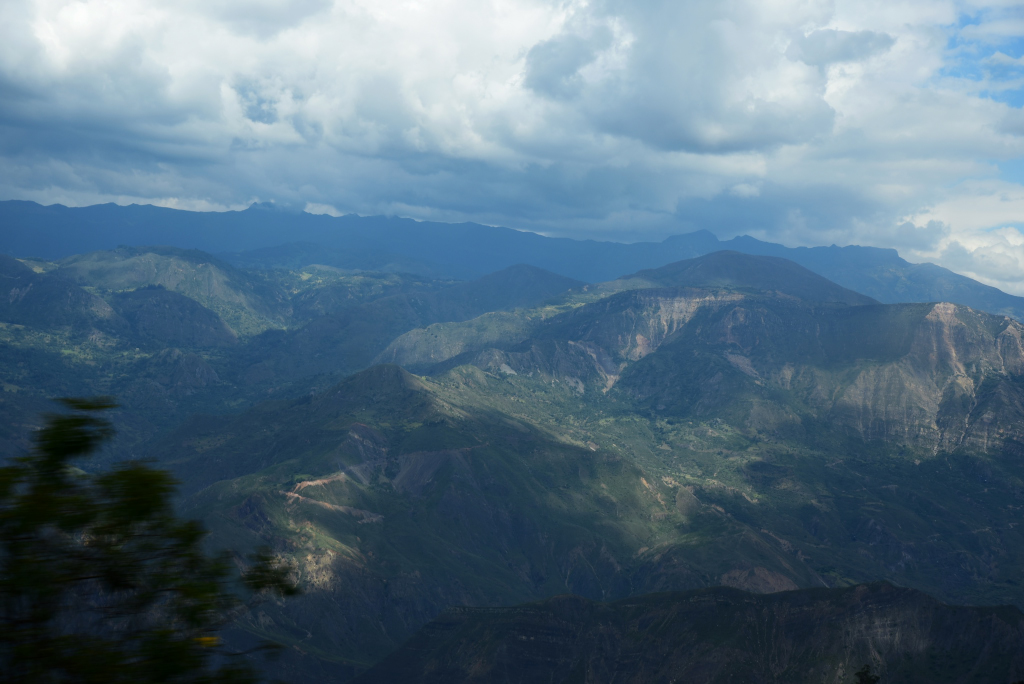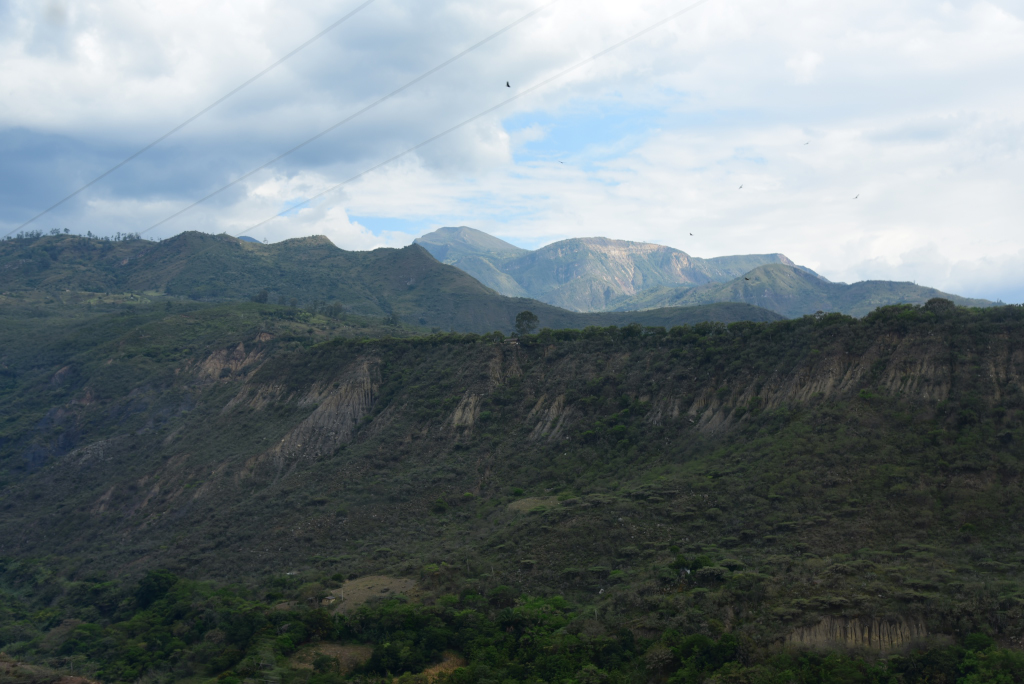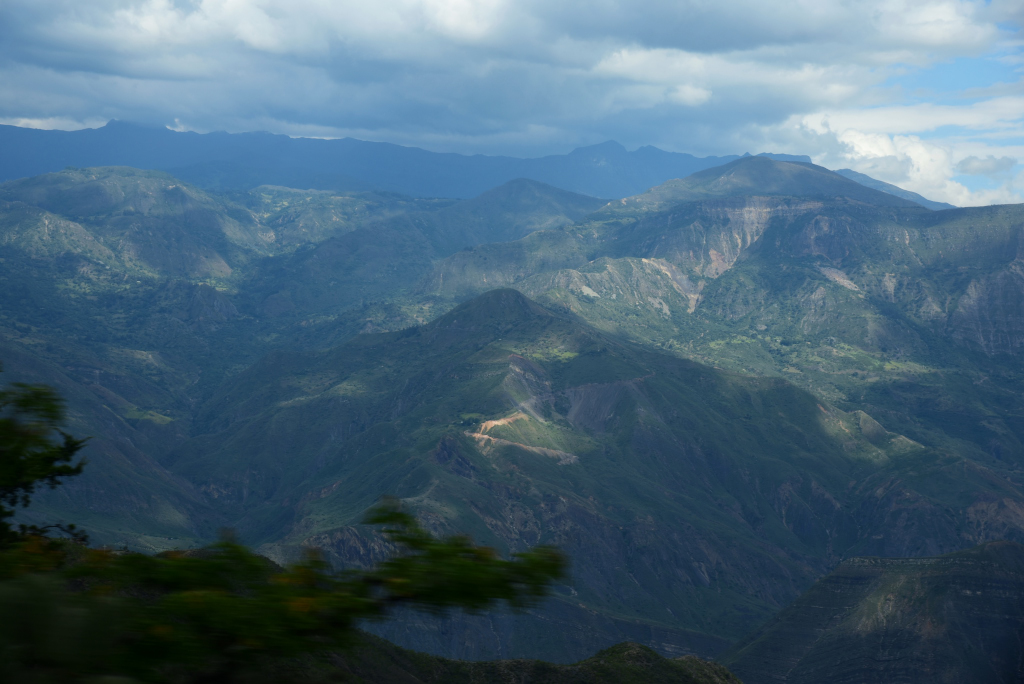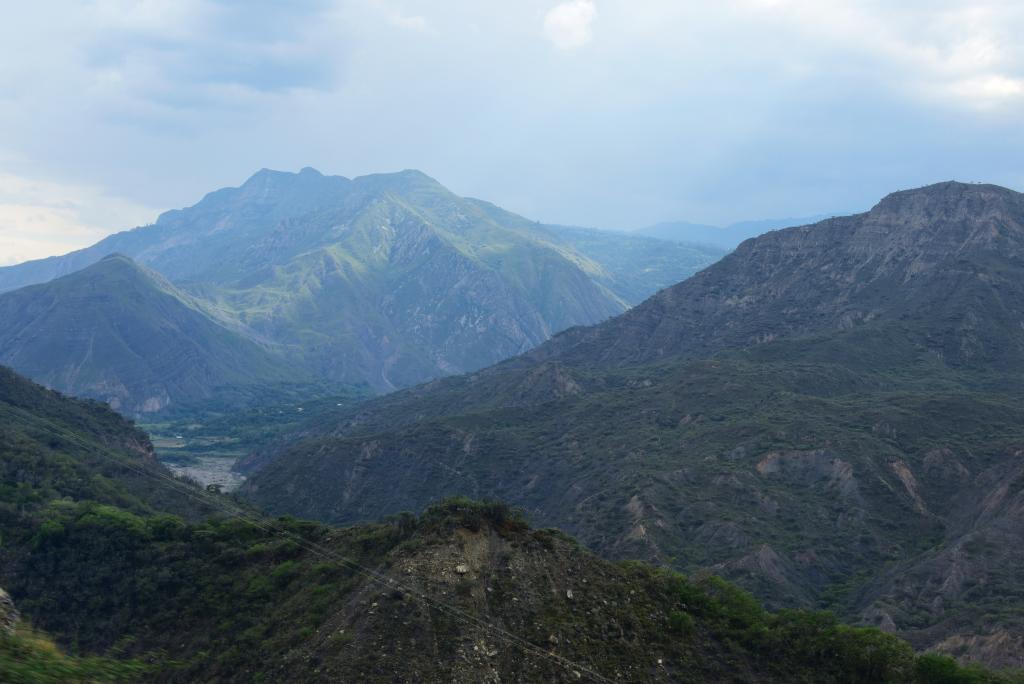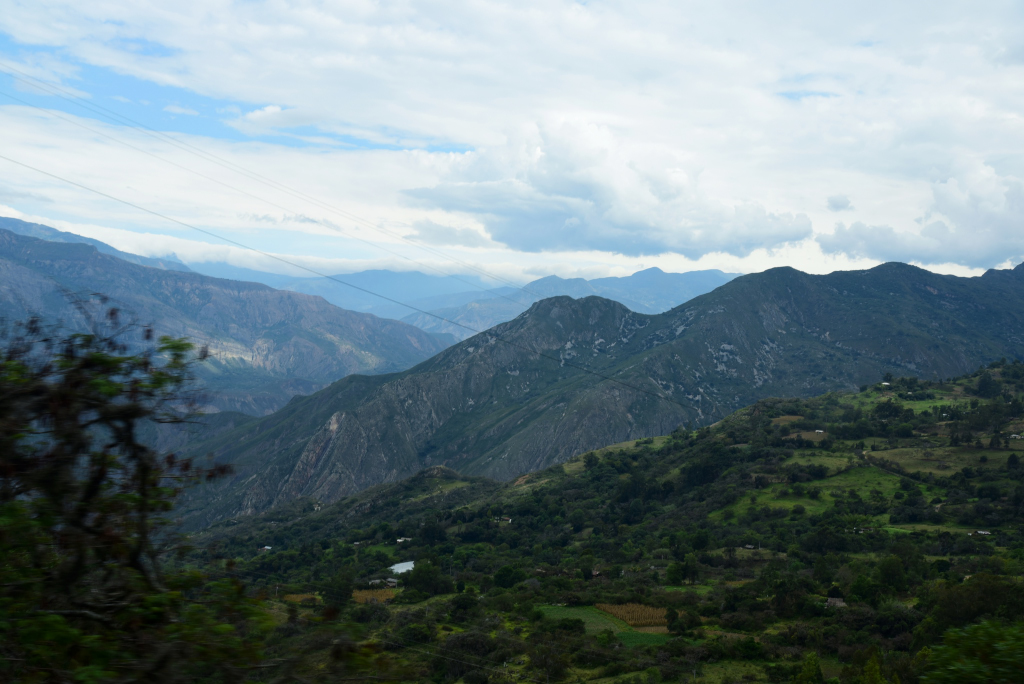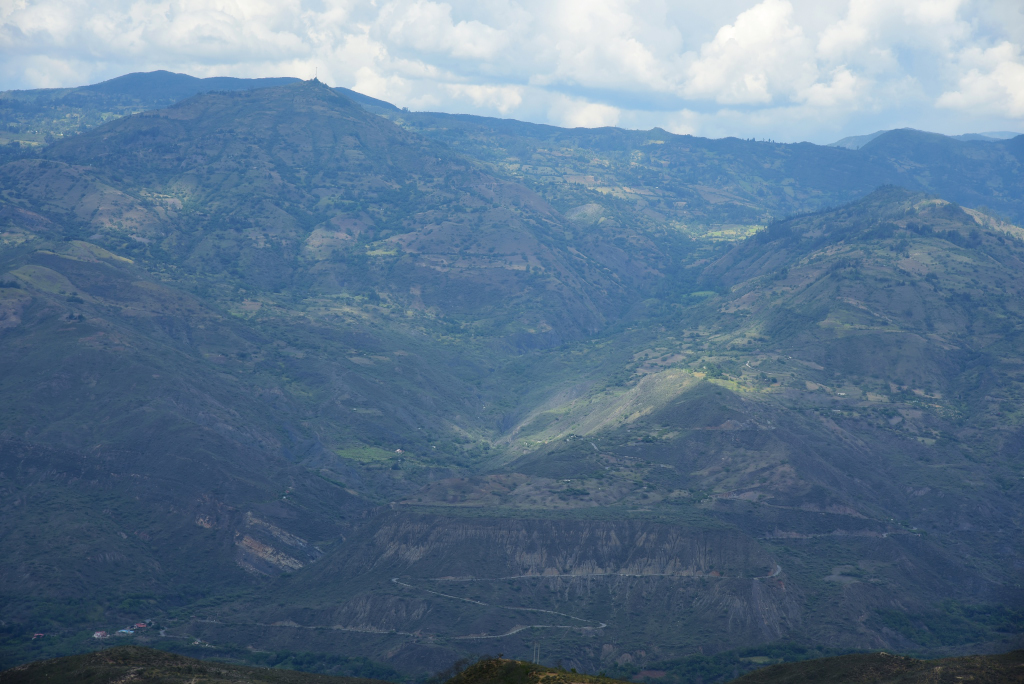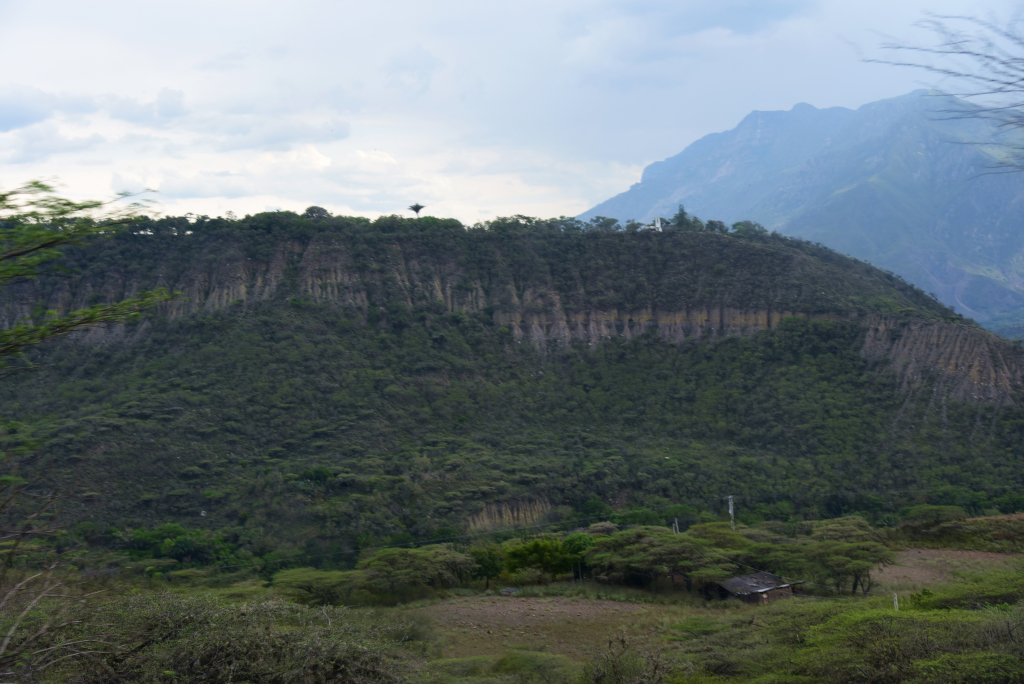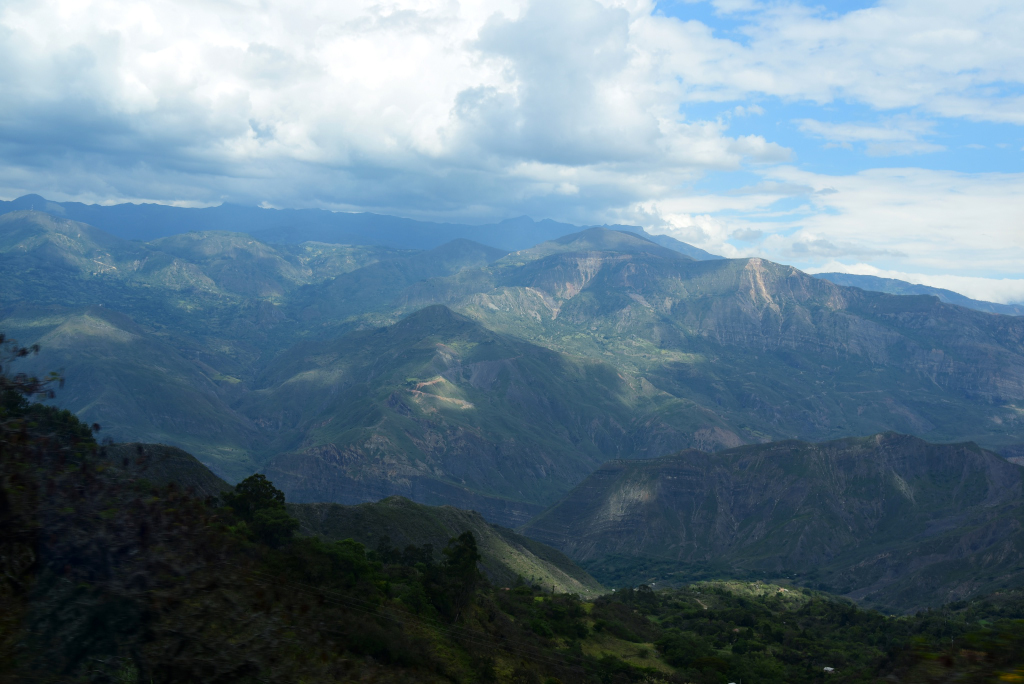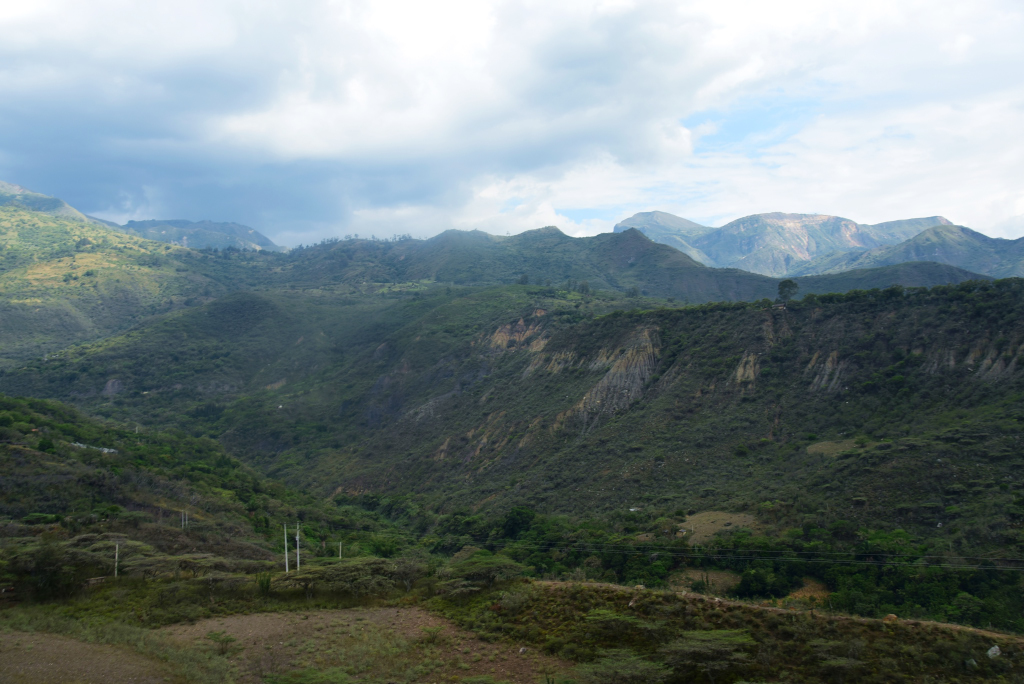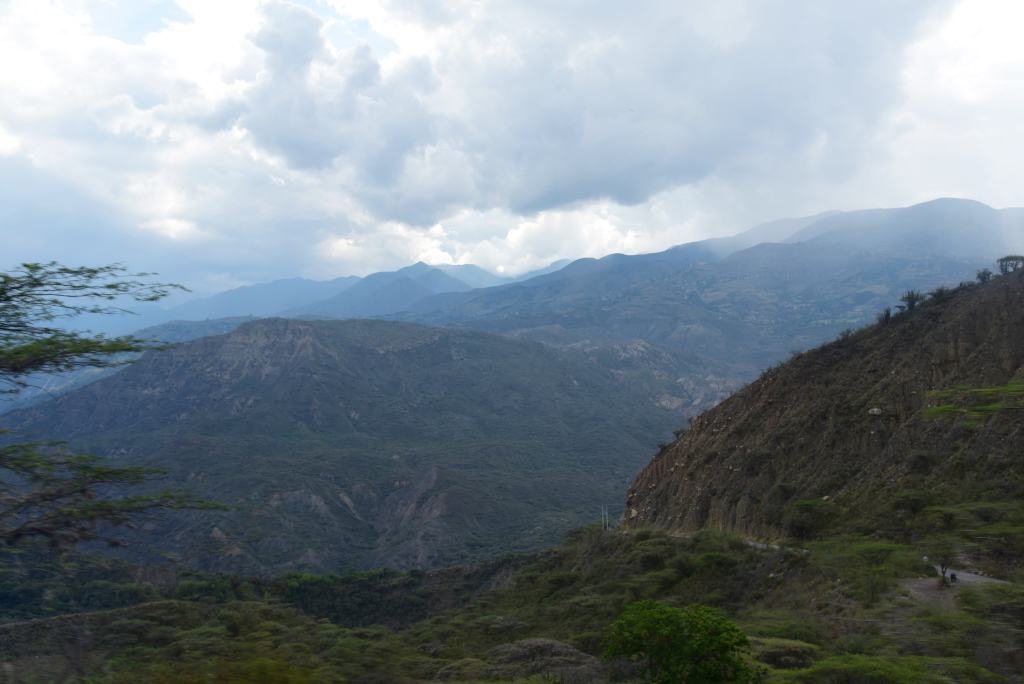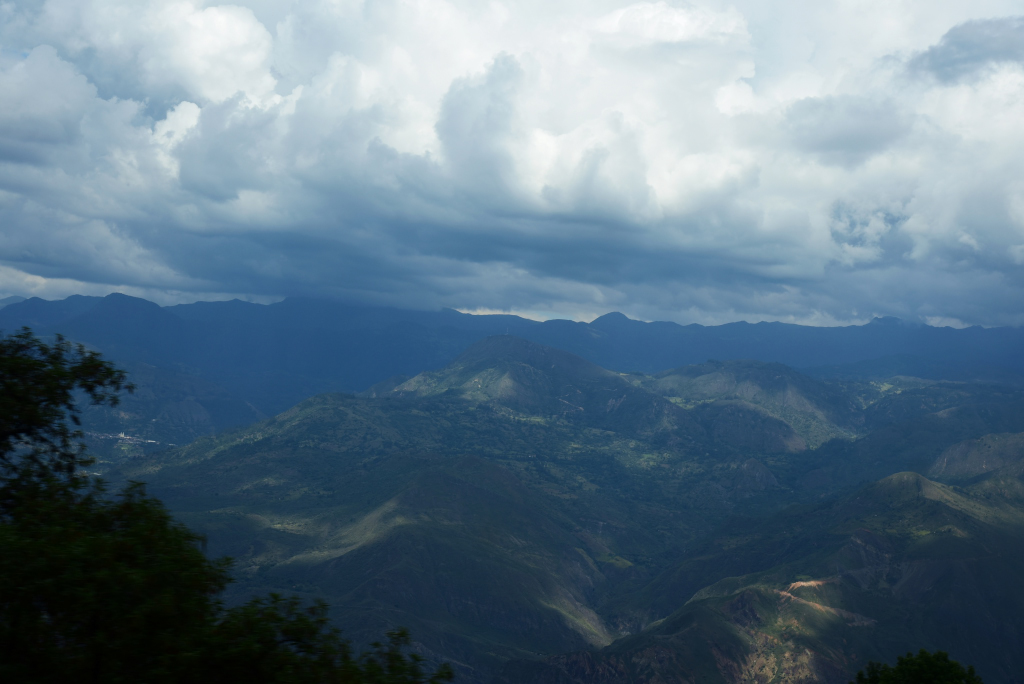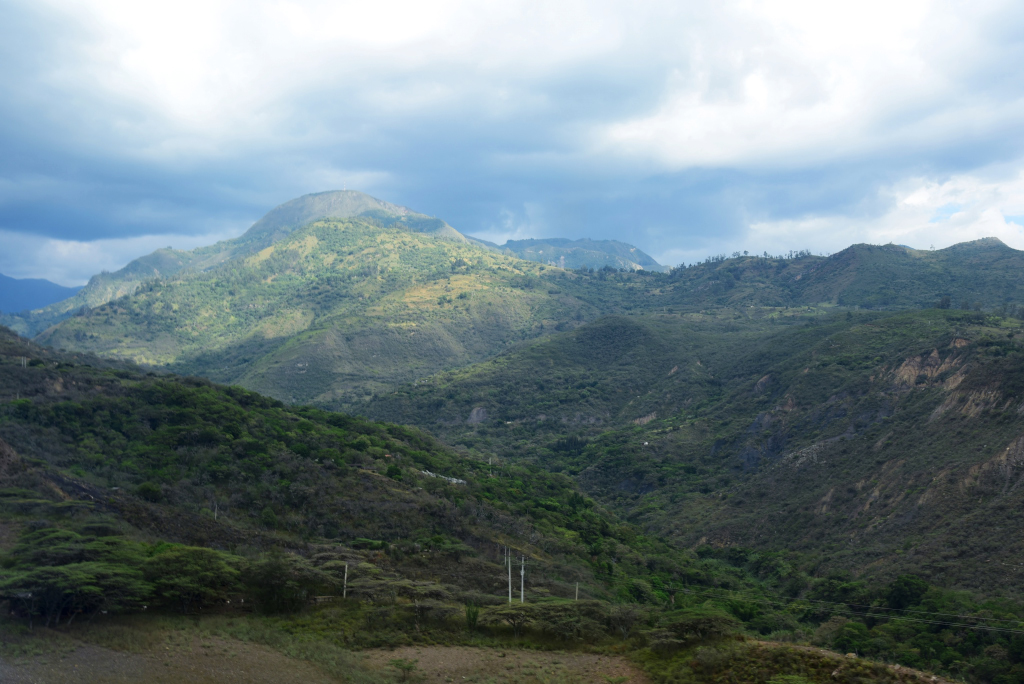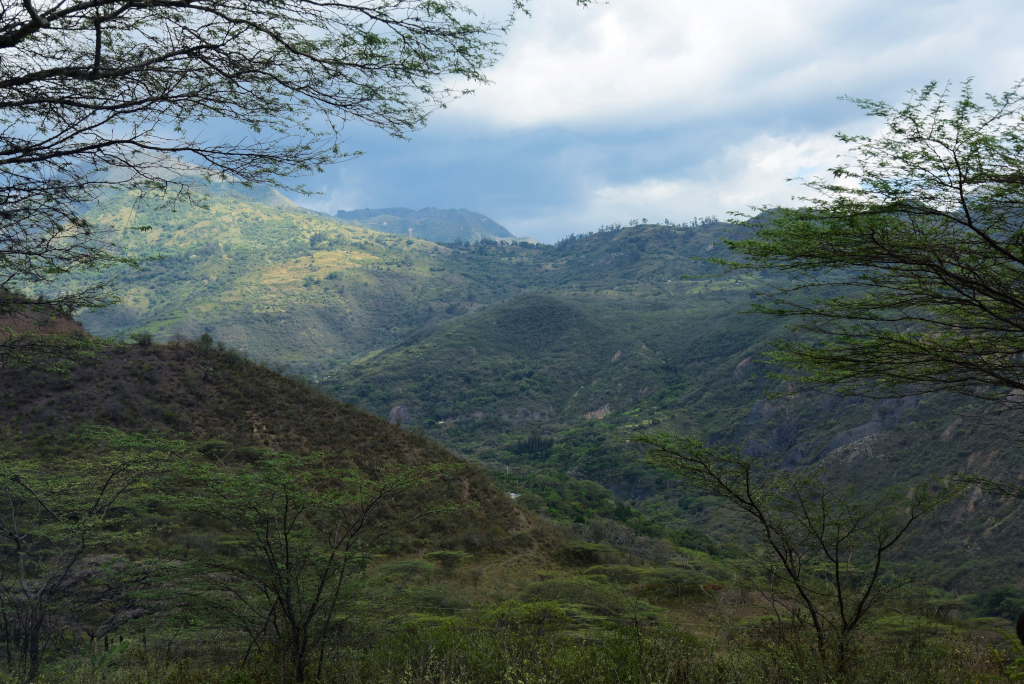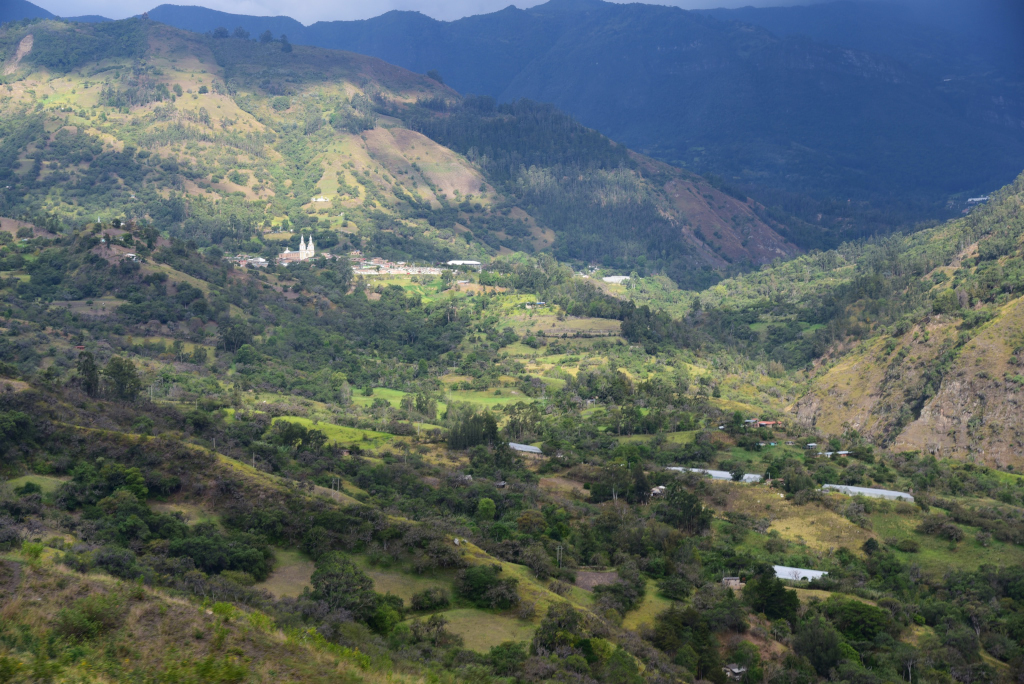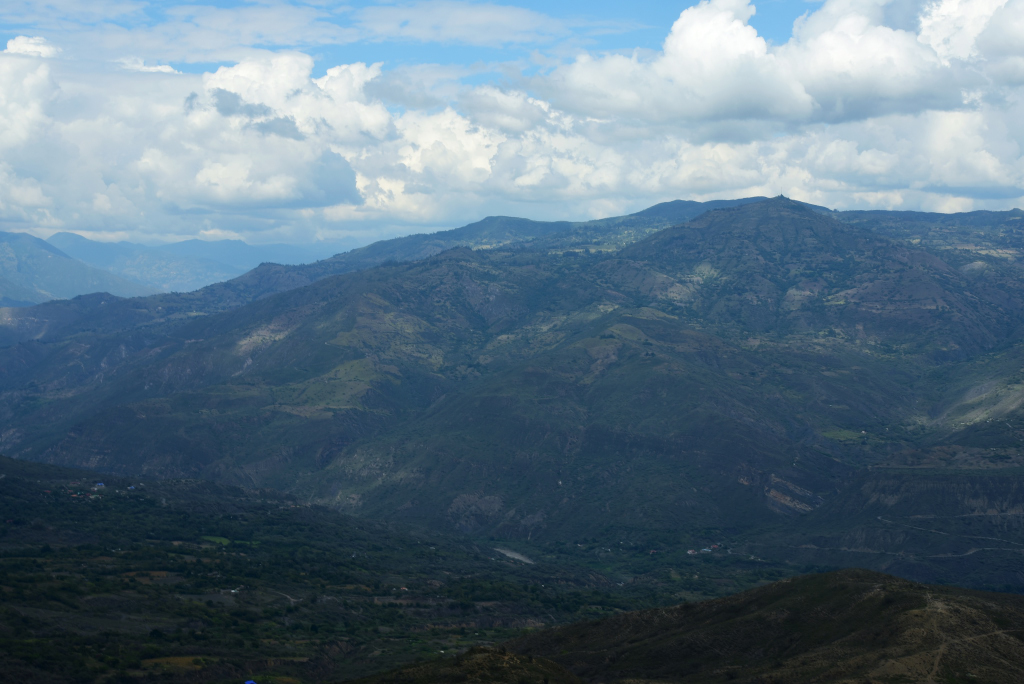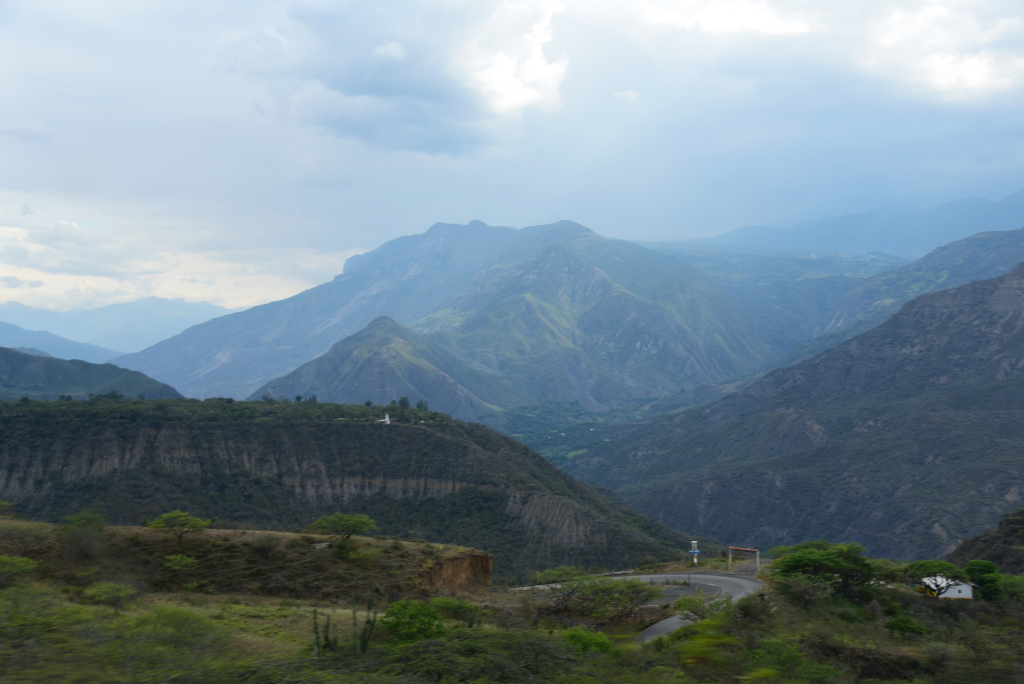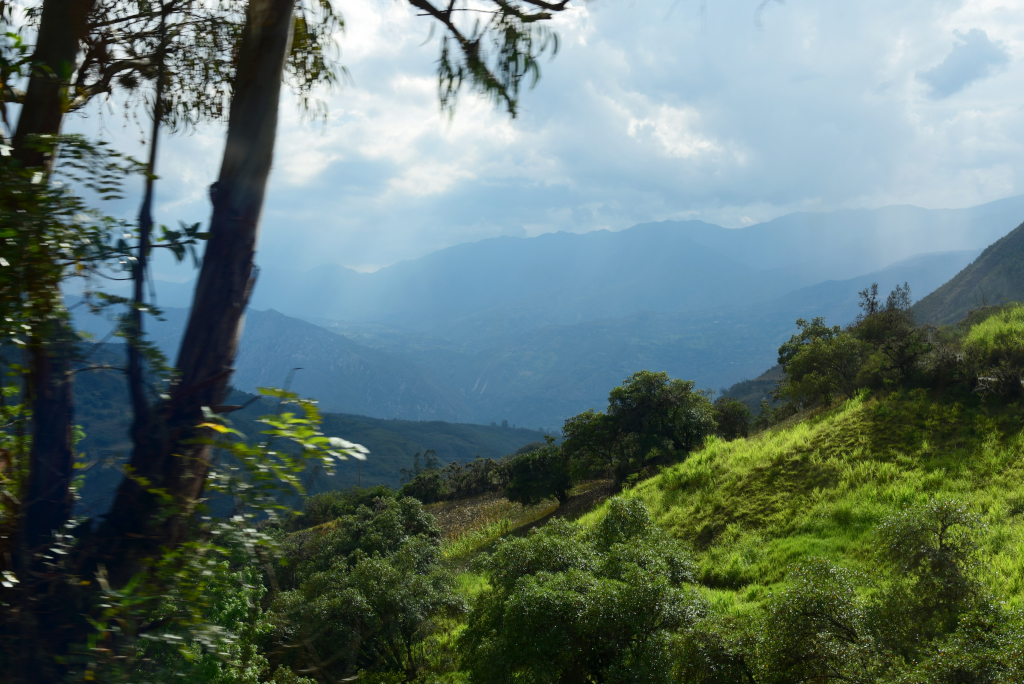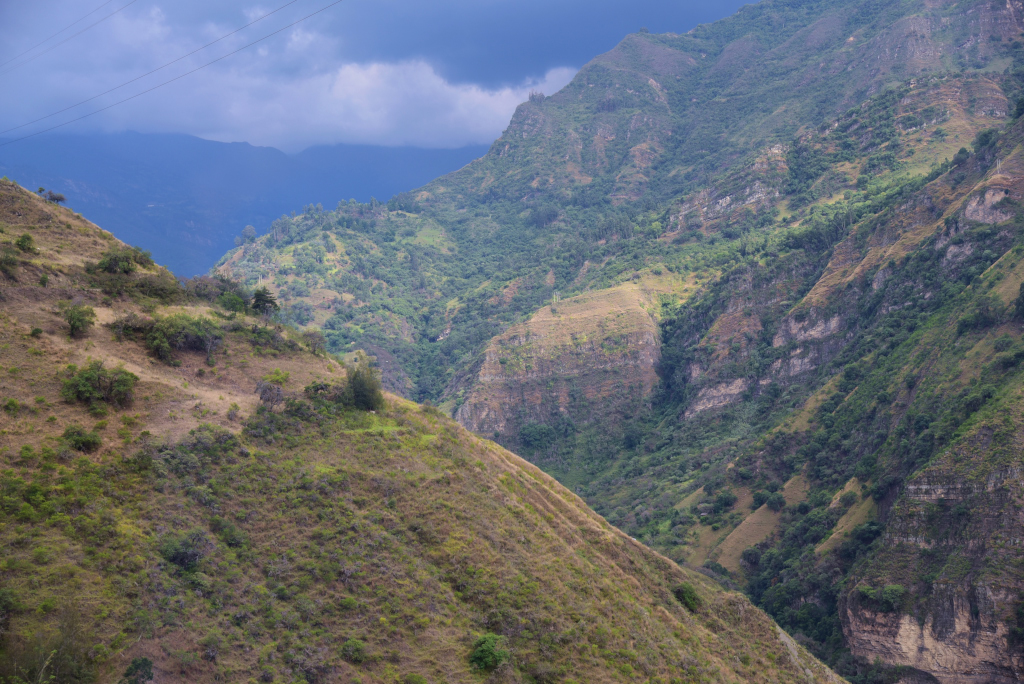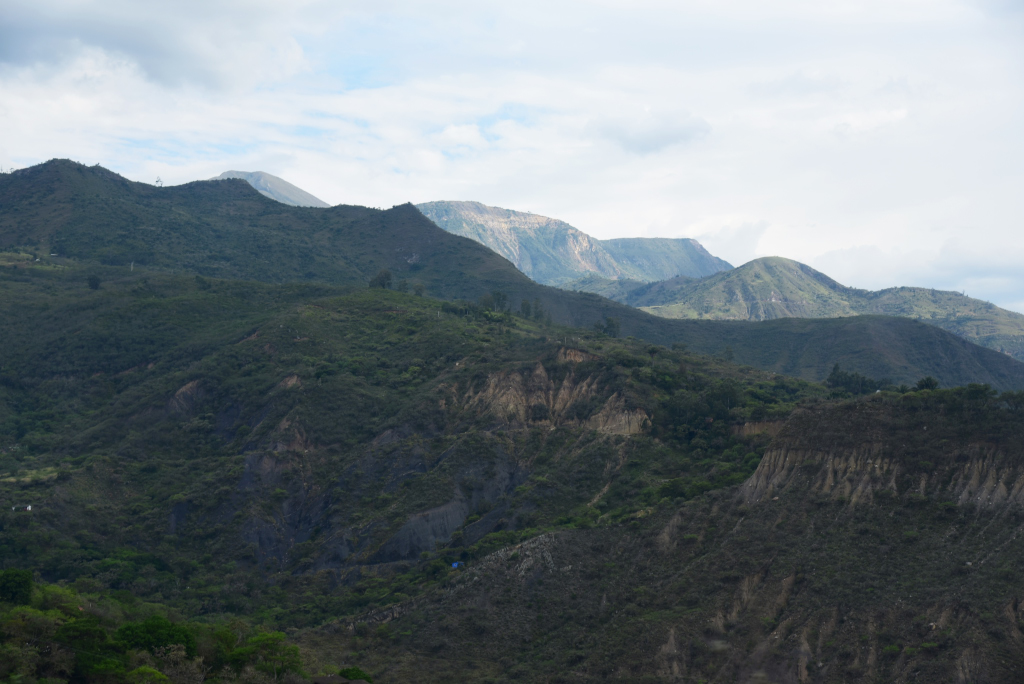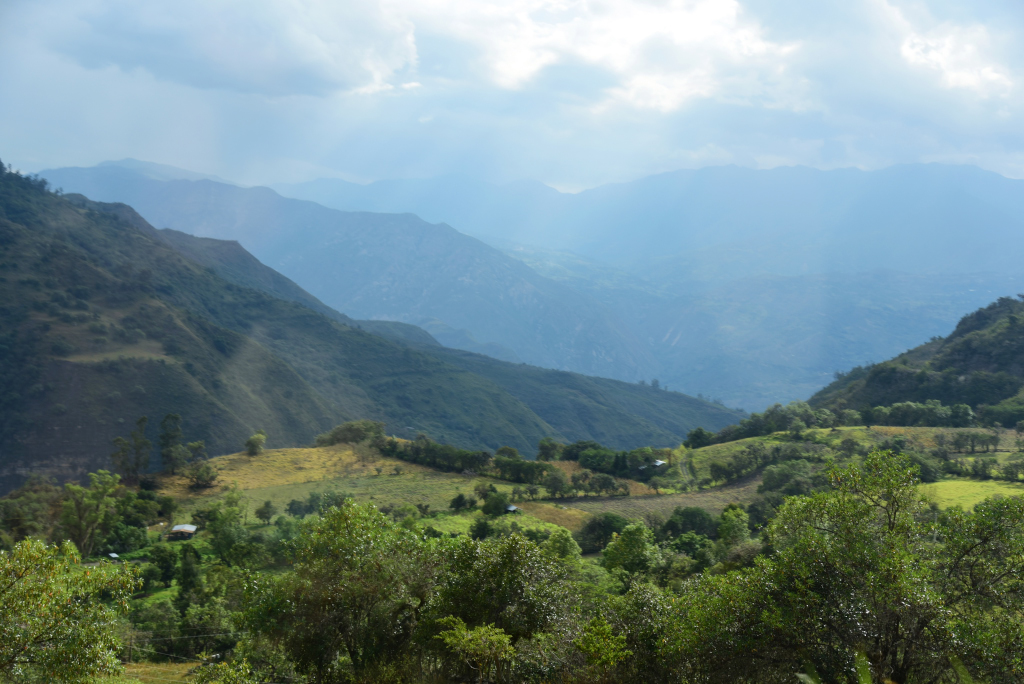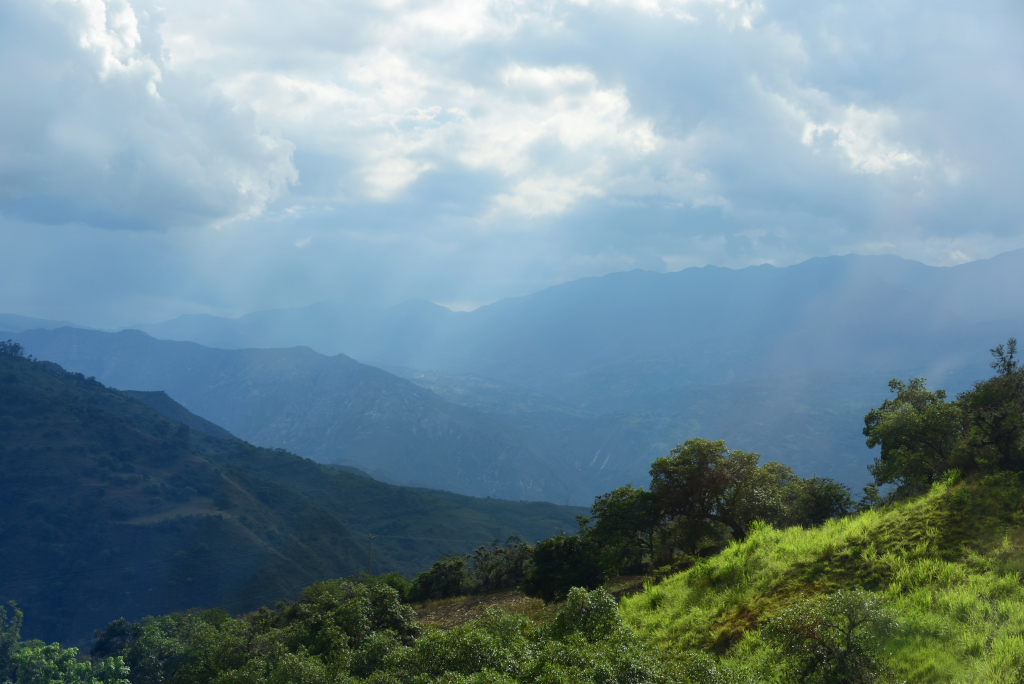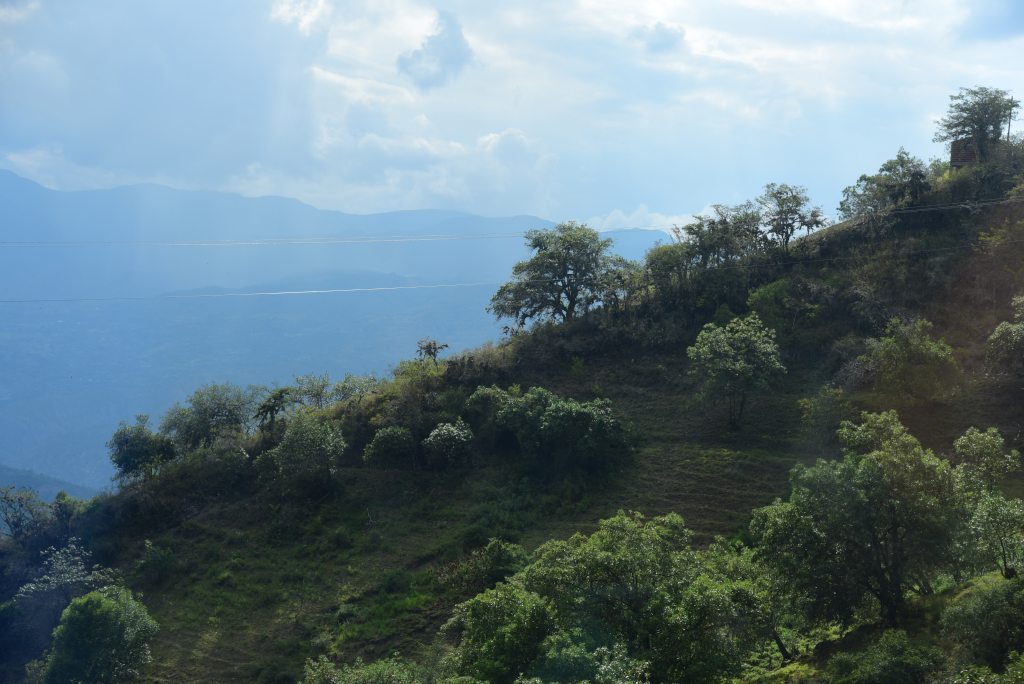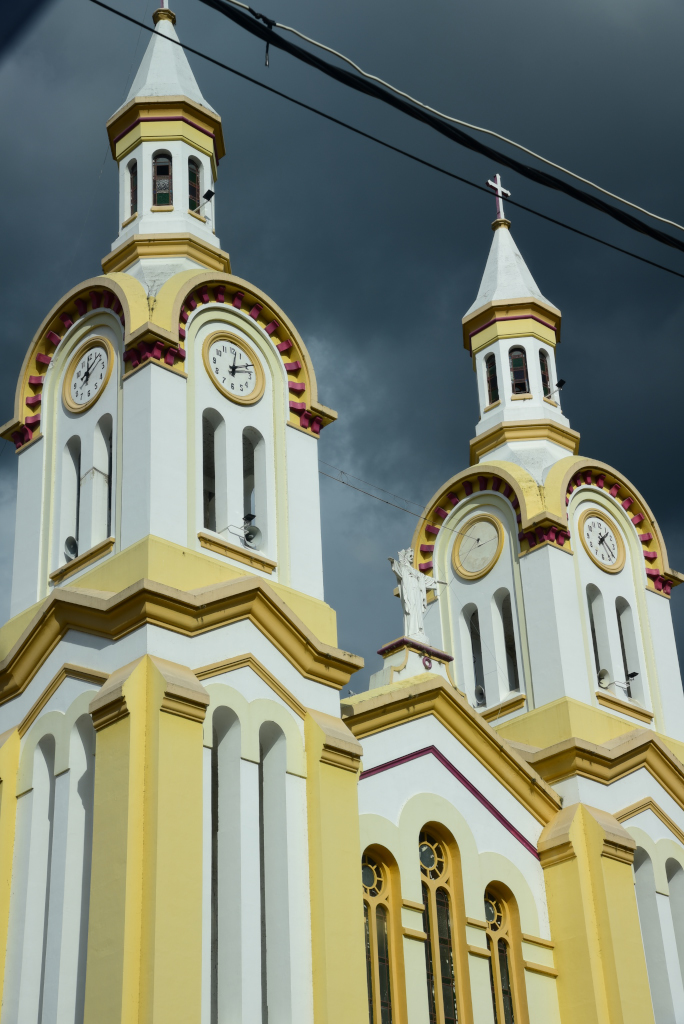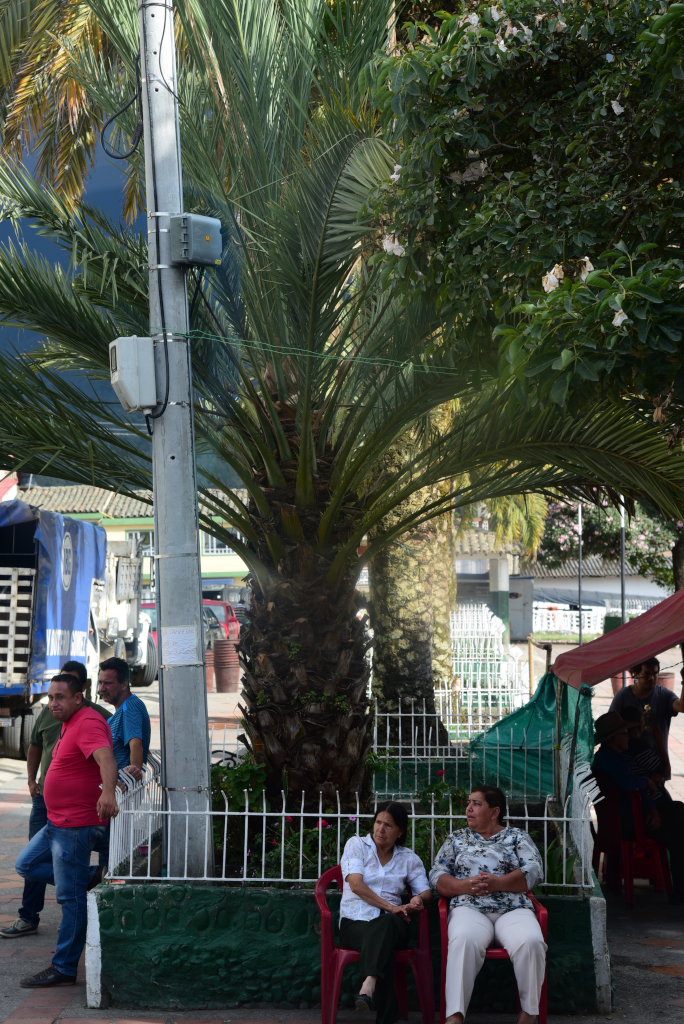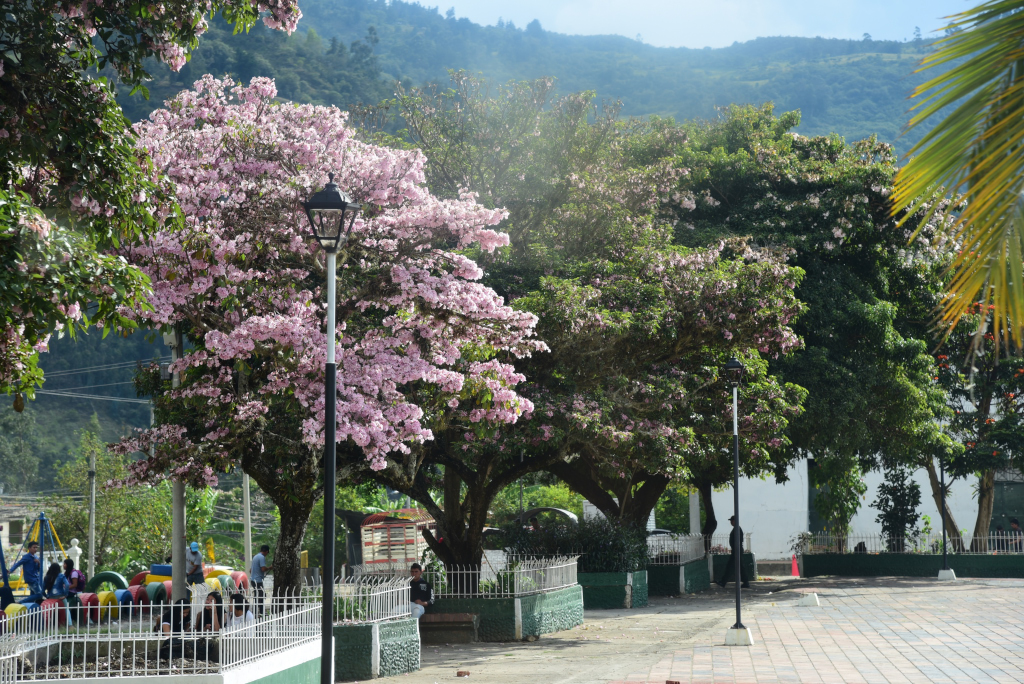February 16, 2018
I don’t want to face the day after so few hours sleep, but then can’t sleep anymore anyway. The sound of vehicles passing by the walls of the hotel at close quarters and the chattering in neighboring rooms from the earliest hour isn’t helping. I get out of bed and go through the motions to prepare for another long day of travel. The wifi is still not working. The hotel looks somewhat more inviting in the morning, but the streets of Tunja are a hard sell coming from the area of San Gil.
I lumber along the narrow streets with my heavy packs. Even the downhill trajectory is intense, to say the least. Historic as the town centre of Tunja may be, the area below the main square leading towards the bus station is far from redeeming, with virtually no shops or restaurants. The crone hidden from view at the back of the small shop springs to life when I enter and ask her about her empanadas, of course, they are fantastic! She brings the warmed-up pastries stuffed with spiced rice, egg and chicken to my table, her eyes glimmering with enthusiasm. She wishes me the most wonderful and rewarding journey, certainly blessings I could use, given that I am about to face the chaos of the Tunja bus station again.
The office of the bus company that provides service to El Cocuy is closed, and the posted departures do not correspond to those I was told at the hotel. A tout in a hallway sells me a ticket for 40,000 pesos, then vanishes. I am instructed to wait at one of the far bays, next to the snack vendors, who call to anyone in their vicinity that is capable of demonstrating a pulse, and many of those passing by would barely qualify. Skimming the piles of edible goods they sell, there is very little that isn’t exclusively starch and sugar. The tinto I order is loaded with sugar. But the women are insistent: buy, buy, buy something.
And I wait on the curb of this triste environment, watching the endless parade of local buses to Duitama and other proximate destinations pass by, but no bus to El Cocuy. Coming from the pristine environment of Chicamocha, it seems like an indignity to have to breath the toxic swill emanating from the buses. Even worse, many of the parked buses don’t shut their engines off, as if there is a general sense of resignation that the place is too polluted to matter anyway. I wait, wait … and no bus appears. My frustration grows: this is not what I am wanting to be dealing with. Ready to take my things and head to somewhere else, just to get out of this bus station, a large Paz del Rio coach pulls into the lot, with destination of El Cocuy.
I am exhausted and soon fall into asleep, the coach moving through the slow Tunja traffic onto the road to Sogamoso. The sky is bright, the hills vibrant blue at the edge of the valley, and the settlements prim and well-maintained. The route should be familiar, as this is the road to Sogamoso. But are we actually headed to Sogamoso? Into the posh new bus station of Duitama, the consummate opposite of Tunja’s decrepit chaos, and then weaving through the narrow streets of town. Duitama has the refreshing feeling of a busy, commercial town, with numerous shops of some caliber and some degree of bustle on the street, but shares the rough-edge pallor of Sagamoso, many buildings unfinished, and no redeeming historical architecture.
From the inane urban landscape of Duitama, the road quickly rises into a vibrant tapestry of agricultural plots and cattle farms spread across rolling valleys, the road hugging the slopes of the hillsides, the vista of green blending into the bluer shades of the more distant hilltops and the cerulean sky above, laden with its requisite cotton puffs. And so we meander through the typical landscape of Boyacá, although it seems far from evident that any snow-capped peaks could be in the offing, although the land around El Cocuy is presumably still far away.
And it certainly is. We continue for some distance, the valleys narrowing, then widening, the ride pleasant, particularly since the bus is both very comfortable and only partially full. We eventually pass through smaller towns, one similar to the next, the windows of the bus passing within inches of the houses in the typically narrow roads, houses diminutive, perhaps two levels, small ferreterias, fruterias, snack shops and cafeterias, the world focusing on a plaza that always features a small cathedral, landscaped gardens, benches, a civilized gathering space in the most rudimentary of towns. In one town that seems to be somewhat more affluent, we stop at a cluster of shops, including a restaurant and several smart bakeries. The waft of fresh baked goods is irresistible, as is a good cup of coffee, but the restaurant just seems to triste to warrant eating.
The road continues on its labyrinthine course through the landscape of northern Boyacá. The mountains around us seem to be growing in height and girth. The peaks tower further into the clouds, while the road’s serpentine curves flow higher and higher into the sky. The land is remote, but everywhere that is not too steep, there is agriculture, a bucolic country landscape, the grazing land shorn thin but not barren, the skimpier tree cover of southern Boyacá becoming thicker and denser, the cloud cover ever-present, but with dramatic breaks continuously in the offing.
It seems strange to see small towns emerging on hillsides or on the crest of a valley so far away from any city, and they are here, climbing another mountain and dropping to the other side, the spires of a small cathedral emerge, surrounded by the cluster of modest brick house hugging tightly to the weak beating heart of the community.
I munch on the round cookies with icing sugar reminiscent of Italian taralli – the only pastry I could bring myself to indulge in, given my aversion to the preponderance of sugar and the generally terrible quality of Colombian baking, icing sugar spraying over my lap. At a town earlier on the journey, I buy a bag of peaches that are either overripe or still green, which make even more of a mess. The air feels increasingly grimy on the bus as the driver fails to turn on the ventilation. Although I am more concerned about the bus breaking down in the middle of nowhere, I wouldn’t even mind having to walk to the next town, where the presence of a gringo would leave the normally aloof locals more than surprised, only that I don’t want to be doing so with my heavy backpacks.
I wipe the window clean with a Kleenex but there is still dirt lodged on the outside. I have to figure out how to take the best shots with my camera, but that involves the bus slowing down and a break arising in the screen of trees that lines the road. Occasionally I am lucky, pointing the camera at the soaring mountains and deep valleys bathed in light. And all I have to do is keep pressing the shutter release – the magic will come out in the wash when I review the photos this evening.
The terrain becomes wilder, more stunning, the road climbing higher, the mountain peaks soaring above, and the cloud cover even bolder as the skies clear somewhat in the late afternoon. Surprisingly, there is still substantial agriculture this far into the northern fringes of Boyacá, and for that matter even settlements, which closer to El Cocuy are prettier and better maintained.
The dramatic mountainscape unfolds around us, washed in the light filtered through the cloud cover, a fractal view of the peaks soaring above, the bus looping back and forth on the uphill serpentine, screens of eucalyptus, fruit trees or pampas grass skimming across the brazen slopes soaring overhead, then retreating to expose a wide valley riddled with pastureland and small plots of agricultural land.
The road runs through a narrow canyon system, the towering peaks closing in, the slopes that emerge around us covered in the euphorbia-like frailejones in the espeletia family. These now endangered plants are found at high altitude in páramo ecosystems and feature succulent leaves structured a spiral pattern. The trunk of the frailejone captures water vapor from clouds and releases it through the roots into the soil, thus helping to create vast high-altitude subterranean water deposits and lakes that will eventually form rivers.
The journey continues, the bus defying the odds of gravity and surging upwards on the serpentine mountain roads, reaching some summit, then descending again, the driver expertly handling the gears and clutch on the vehicle so as to assure a smooth ride the entire distance, despite the relentless inclines and drops, and having to maneuver at considerable velocity on the narrow road. That no accidents happen, and that the bus engine doesn’t break down simply astonishes me.
I can’t fathom that servicing this difficult mountain route with full-sized buses is at all economically feasible, especially for the paltry fares we are paying. The bus engines must burn out or at least require considerable maintenance in order to be able to meet the challenges of the roads.
It is getting dark – and we are still not in El Cocuy. We pass through town upon town, grinding through hairpin turns up and down the steep hillsides, then climbing through the narrow alleys towards the main square, often beautifully cobblestoned, with an English-style garden with trimmed hedges and flowering bushes, one side with the formulaic cathedral, tuktuks or other vehicles parked on the square, a few stray locals observing the arrival of the bus with keen interest, as there is little else bound to make much of a mark here otherwise.
The bus pulls into El Cocuy in the dark, the driver navigating the narrow alleys with his expert driving skills. He drives through the plaza to an area on the far side of town, turns the bus around – not going to try that here – then passes back through the town. I see numerous signs bearing the name ‘El Cocuy’ but the drivers seems to be continuing towards the town exit. I rise from my stupor and ask if we are in El Cocuy. Yes, but we are going to Guican. So? I bought a ticket to El Cocuy which is where I want to go. Do you want to get off here? What do you think? We are going to Guican … Just drop me off here, as it will get too complicated trying to explain the idea of traveling to a particular destination to you.
If I had disembarked when the bus had crossed the plaza, I would have been saved the walk. But thanks to the inattentive bus driver and conductor, I am forced to schlepp my things three blocks uphill to the Hotel San Gabriel. In the dimly-lit evening, I can see that this town has an immense amount of character if not history, which seems quite strange for a place that is so incredibly remote.
The manager at the Hotel San Gabriel explains the history and context of the town. It is actually one of the oldest towns in the country, having been one of the first places the Spanish installed themselves when they moved inland from the coast in search of gold. Boyacá and Santander are actually not rich in gold, although the local indigenous people venerated gold. The area used to bear a substantial population, and due to the effects of the years of the Violencia, the region had been effectively depopulated. In recent years, people have been moving back into the area, the big incentive here being tourism surrounding the Parque Nacional de Cocuy. This would probably explain why the towns in the area are so well-maintained, as opposed to the towns further away.
The land used to be devoted to a variety of crops, but free trade changed that: thanks to getting cheap American produced dumped on the country, the historically high prices of fruits and vegetable that sustained the rural population eroded the economic fabric, and probably contributed to the depopulation of the land to the cities. Most of the land is now devoted to dairy farming, although tourism is assuring a considerable boost as well.
Arranging to hike in and around the Parque Nacional de Cocuy is actually more straightforward than I would have expected – and it all comes into focus speaking to the very level-headed manager of the Hotel San Gabriel. It turns out that there are three hikes possible outside the park, which require no guide nor the payment of a park admission fee, while the three hikes inside the park require both. The admission fee is payable only once in a particular period. It is best to organize hikes with other parties in El Cocuy rather than at the cabanas from which the hikes depart on the periphery of the park. It is no longer possible to camp in the park in the context of overnight hikes, which is just fine with me.
I definitely don’t want to take on too much tomorrow, as I have just spent two days on buses, and I need a break. The manager is apologetic about the noise the upstairs room with view is exposed to, but the music from the disco across the street is nothing compared to the relentless grinding traffic you typically experience in the smallest towns here. In any case, I love the idea of being upstairs in this charming locale with its polished wood floors, wood beam ceilings, heavy wood furniture and quaint courtyard. The hotel around the corner I am sent to for dinner seems posher, with more spacious rooms, even more romantic, but I can’t imagine the rooms being available for the paltry 40,000 pesos a night I am paying for my haven of charm, spiders and all.
I now have a lot of journal writing to catch up on but feel like doing absolutely nothing. I think I am suffering from a lack of sleep as well as having spent too many hours on the bus the last few days. Even the vallenato has stopped at the club next door. The only thing keeping me from collapsing in bed is the thought of the enormous spider crawling along the ceiling jumping on me as I try to get to sleep.

